[Dramatically extends the shelf life of vegetables! ] What is blanching process?
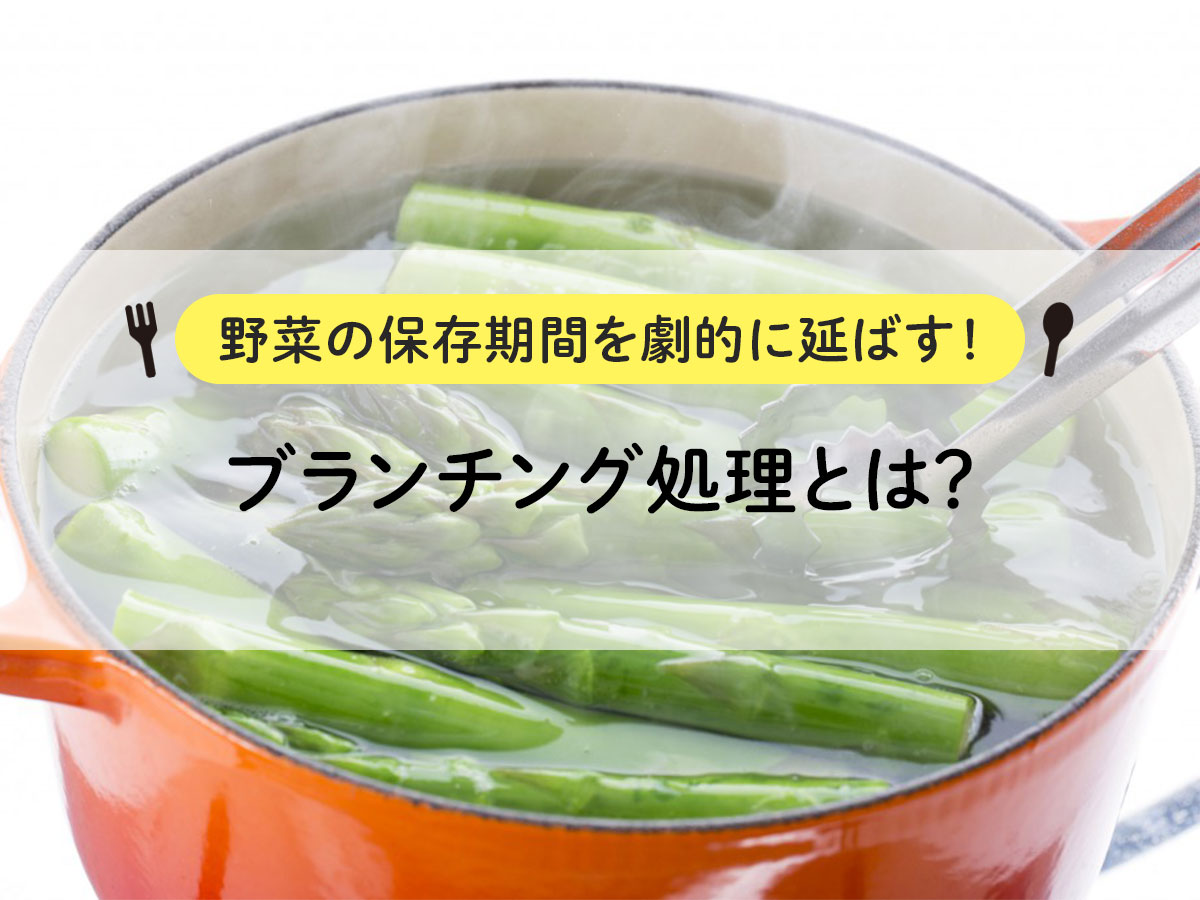
When you freeze vegetables, they lose moisture and become limp.
Do you know the technique called “blanching” to prevent this? This is an easy way to improve the quality of frozen vegetables at home.
This is a must-read for anyone who is planning to freeze vegetables or is having trouble figuring out how to freeze vegetables!
目次
What is blanching process?
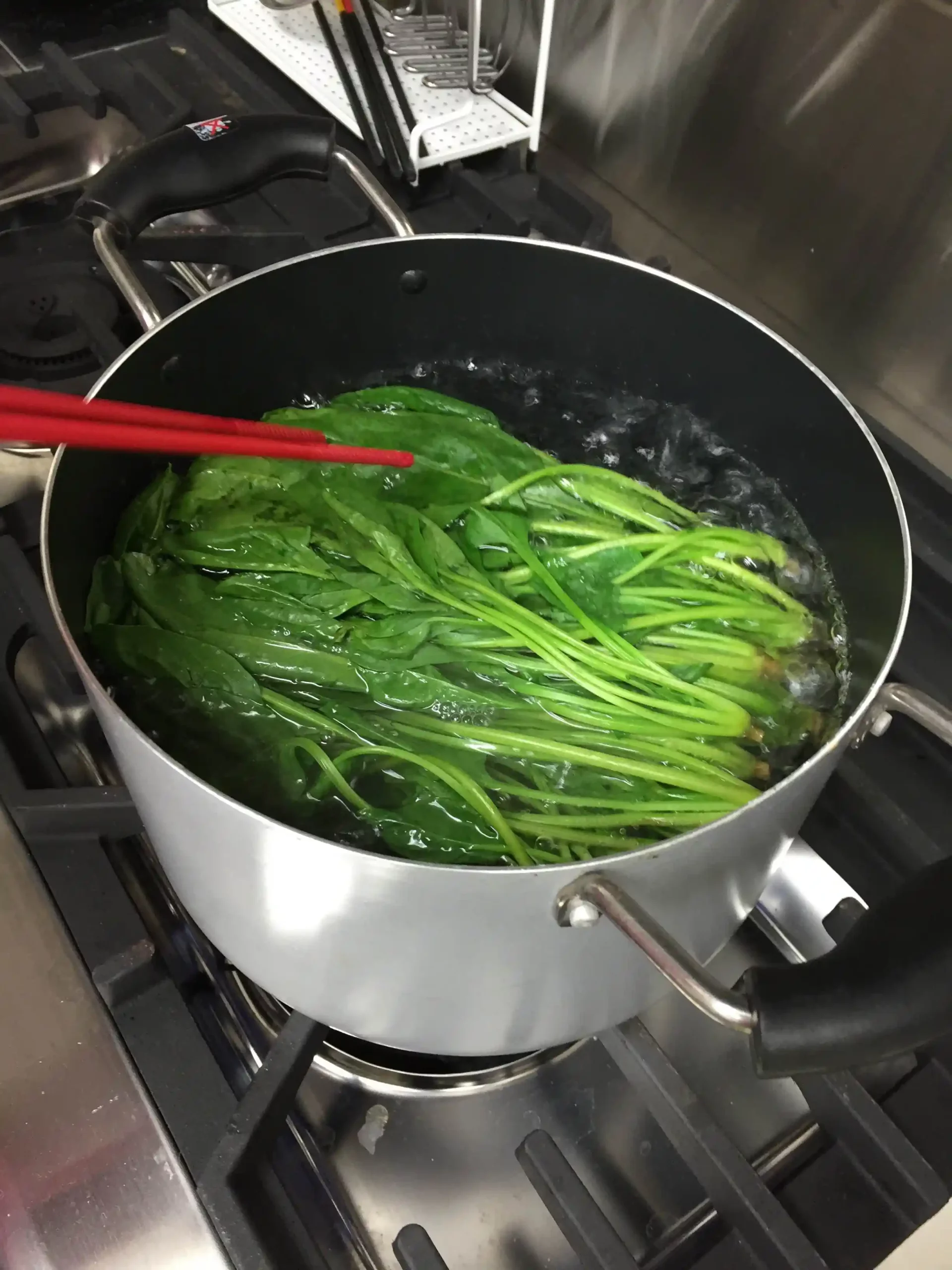
Blanching is the process of quickly parboiling vegetables and other vegetables before freezing them in order to increase their resistance to freezing and extend their shelf life. If you freeze vegetables, when you thaw them, the moisture inside will come out and they will become limp. Blanching softens the tissue of vegetables and makes them more resistant to freezing.
Additionally, by deactivating enzymes, it is possible to stop the deterioration of vegetables that are prone to discoloration.
Vegetables suitable for blanching
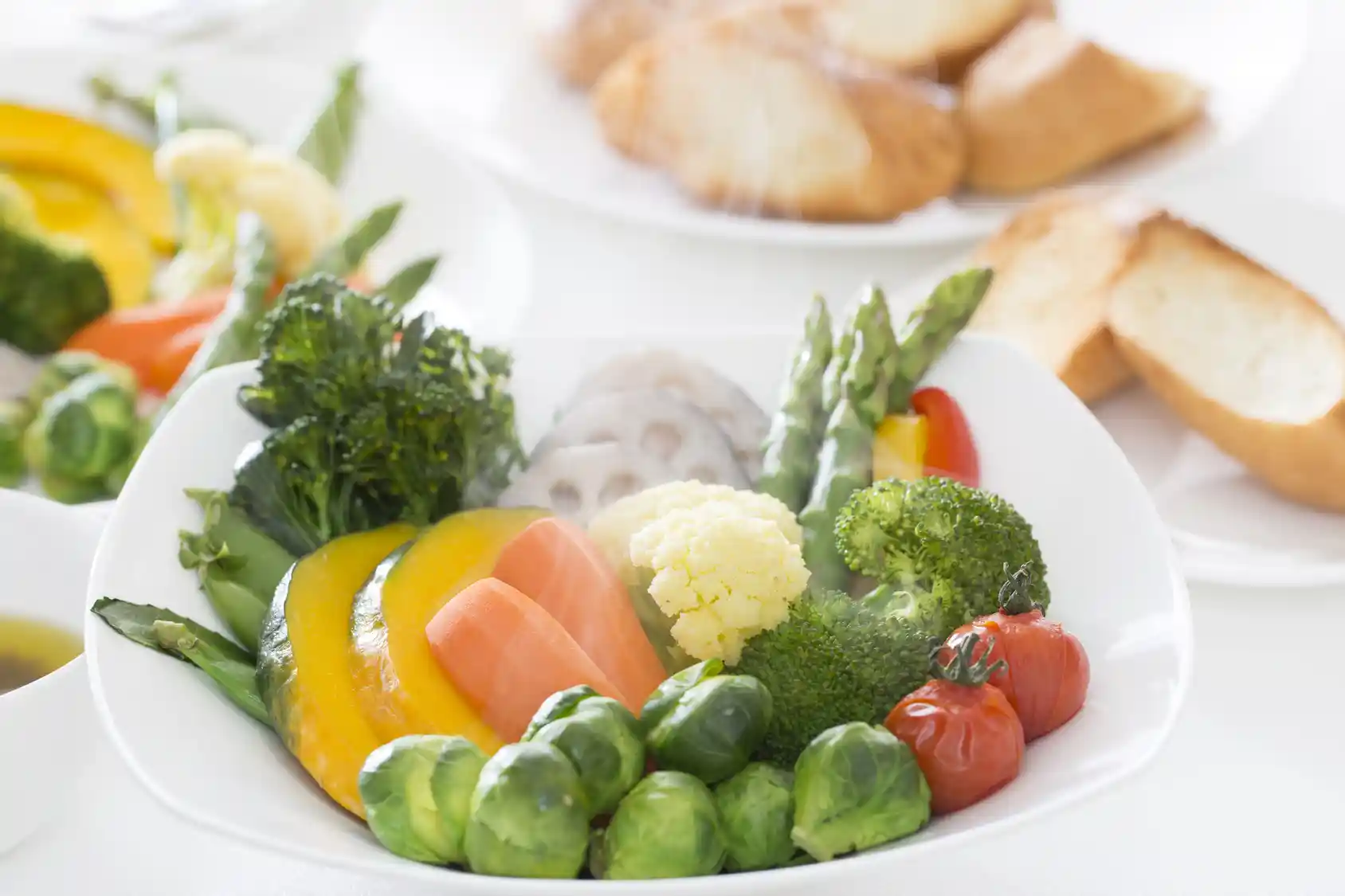
Legumes such as edamame, potatoes, corn, pumpkin, and spinach are often blanched before freezing.
On the other hand, mushrooms such as king mushrooms, komatsuna, onions, and tomatoes are often frozen without blanching.
Mushrooms have a low water content, so they are resistant to freezing and do not require blanching. It's also a good idea to freeze foods that break down when heated, such as tomatoes.
Effects of blanching treatment
Increases the freezing resistance of vegetables
Foods' resistance to freezing is determined by the strength of the food's structure and the amount of water it contains. If the tissue is weak and has a high water content, ice crystals will break down the cells when frozen, leading to drips.
Vegetables are made up of 80% to 90% water, so they are sensitive to freezing. Boiling vegetables quickly and cooling them under running water softens their tissues, making them more resistant to freezing.
Enzyme activity is suppressed
Vegetables contain polyphenols and oxidative enzymes, which oxidize during storage and cause discoloration on cut surfaces.
Heat treatment (blanching) suppresses the activity of these enzymes and prevents vegetables from discoloring during storage. Vegetables that are prone to discoloration include potatoes, lotus roots, and burdock.
Bactericidal effect
It has a hygienic effect by killing bacteria on food surfaces. When passed through boiling water, 90% of bacteria can be killed in 10 seconds and more than 99% in 1 minute.
Bacteria are only present on the surface of vegetables, so blanching can kill most of the bacteria.
How to blanch and freeze vegetables
This time, we will blanch spinach as a leafy vegetable and carrots as a root vegetable.
Spinach blanching process
1. Wash the spinach. Be sure to remove any dirt from the roots.
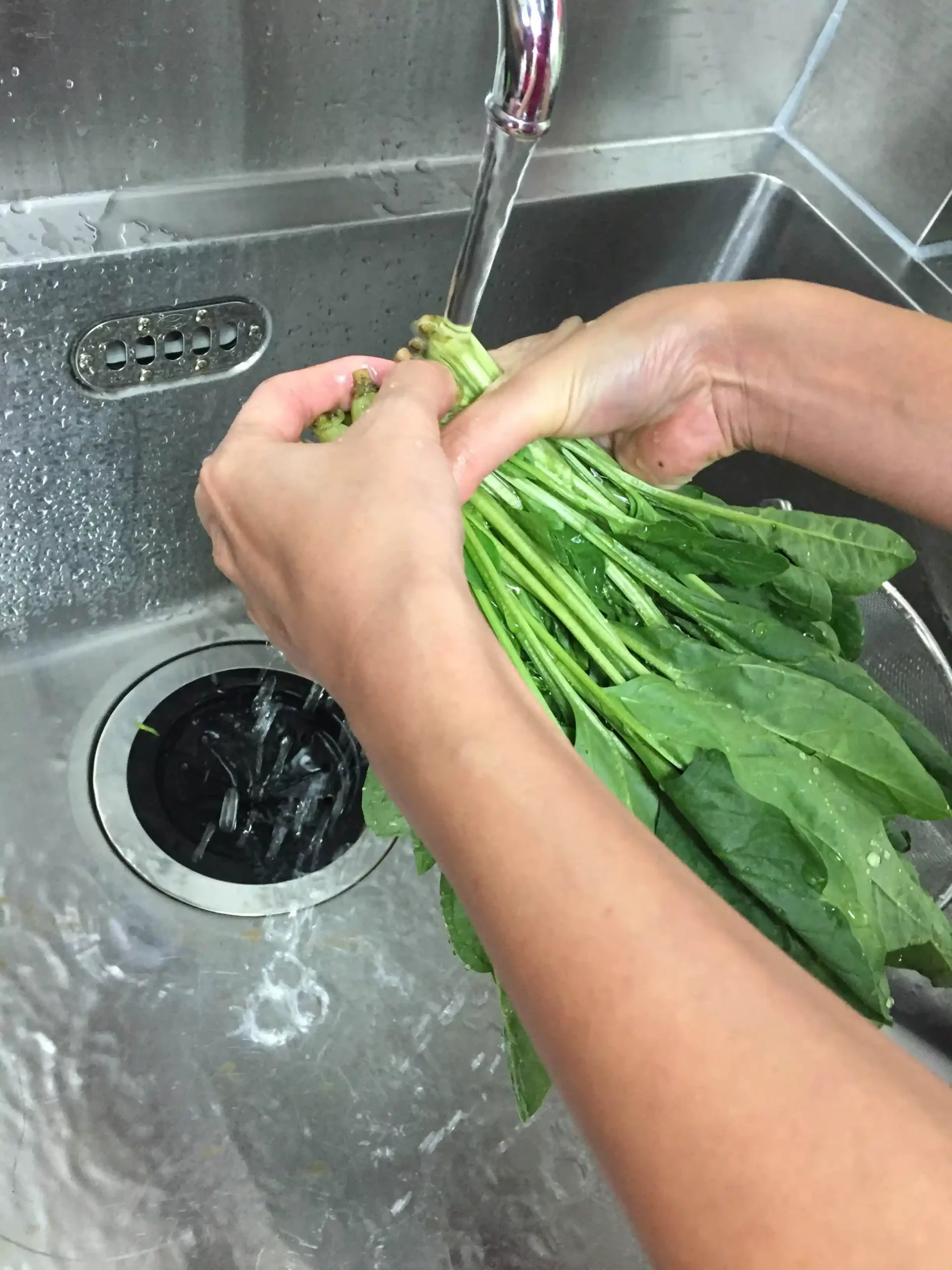
2. Add vegetables to boiling water and blanch. The heating time depends on the type and size of vegetables, but a rough guideline is 10 to 30 seconds. Adding a pinch of salt to the hot water will improve the color after boiling.
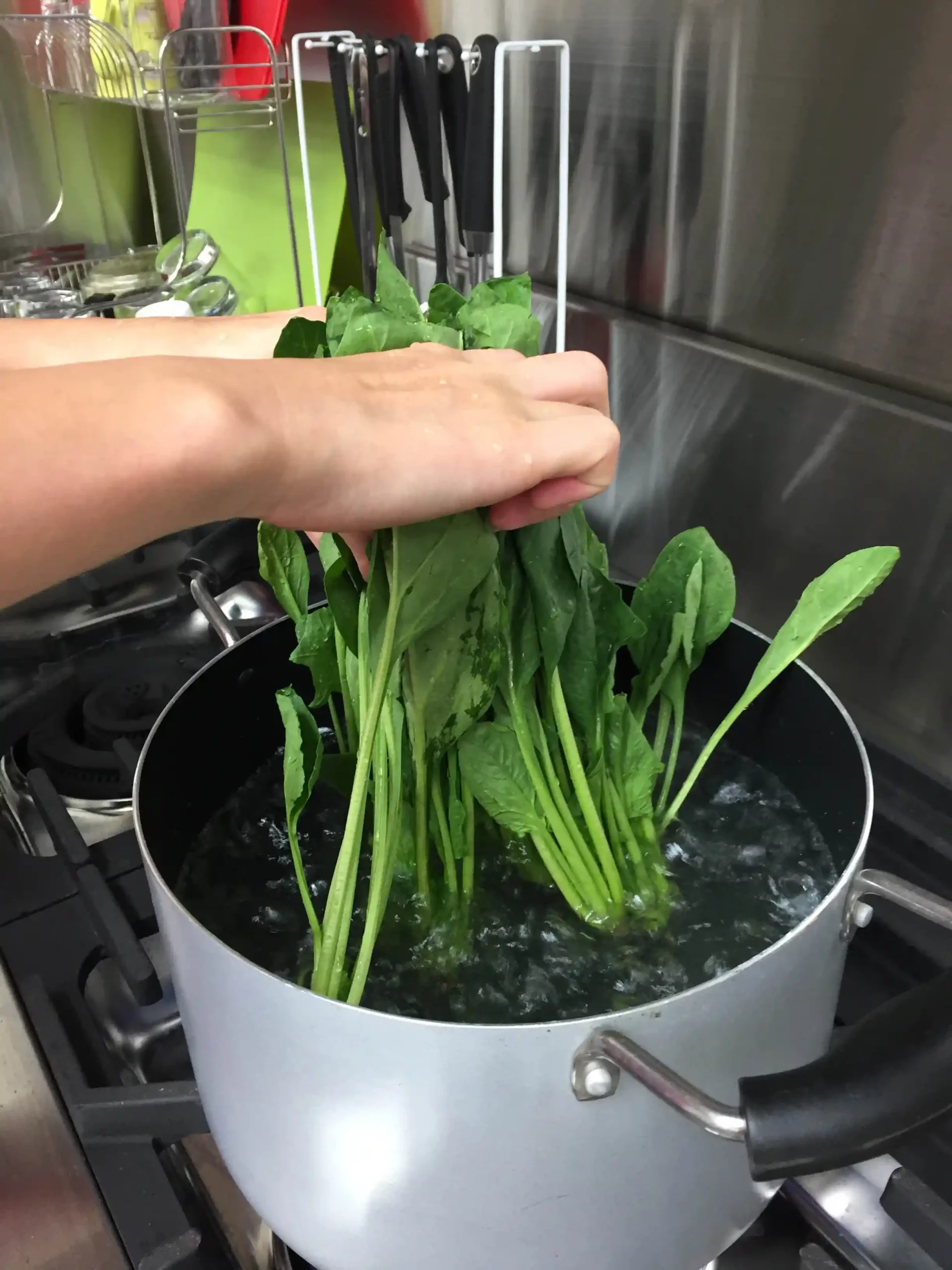
The key to boiling spinach and komatsuna is to boil the hard roots first.

2. Fry in a colander and cool immediately with cold water.
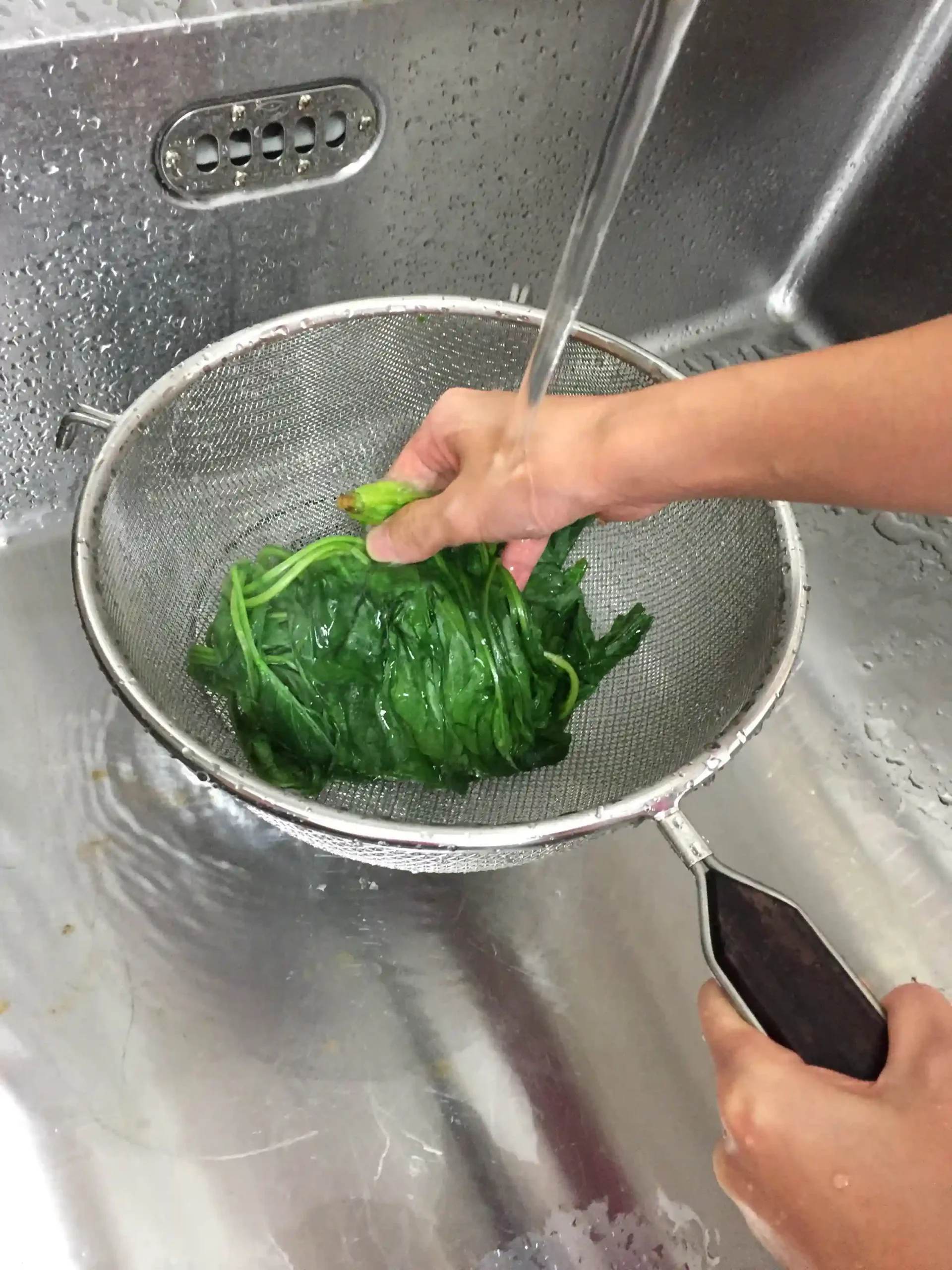
3. Drain the water and cut into easy-to-use pieces. If you are using it for dipping, it would be best to divide it into 3 equal parts.
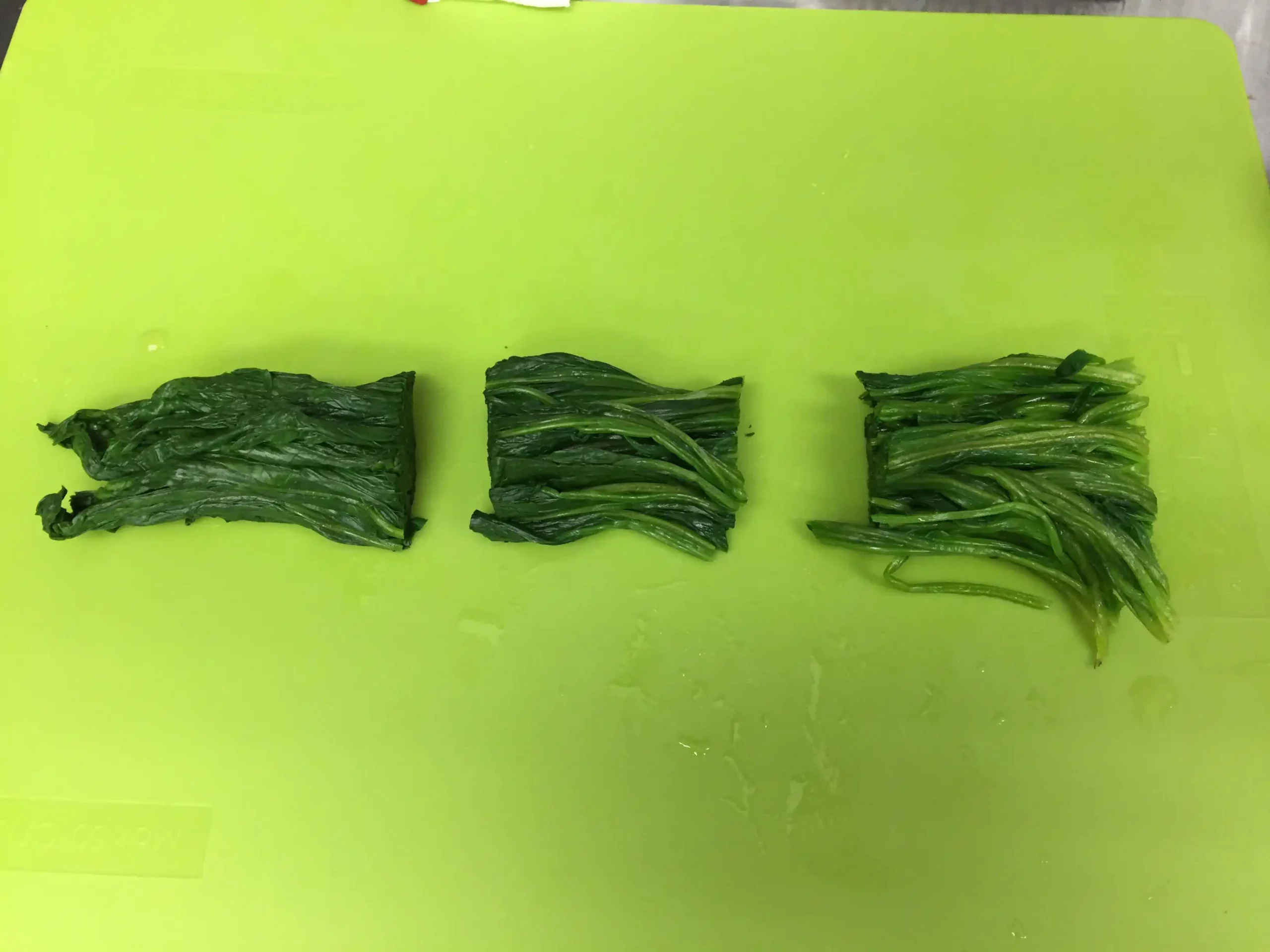
3. Wipe off the moisture thoroughly.
If you freeze the vegetables with water remaining, frost will form and damage the vegetables, so be sure to wipe them thoroughly with paper towels.
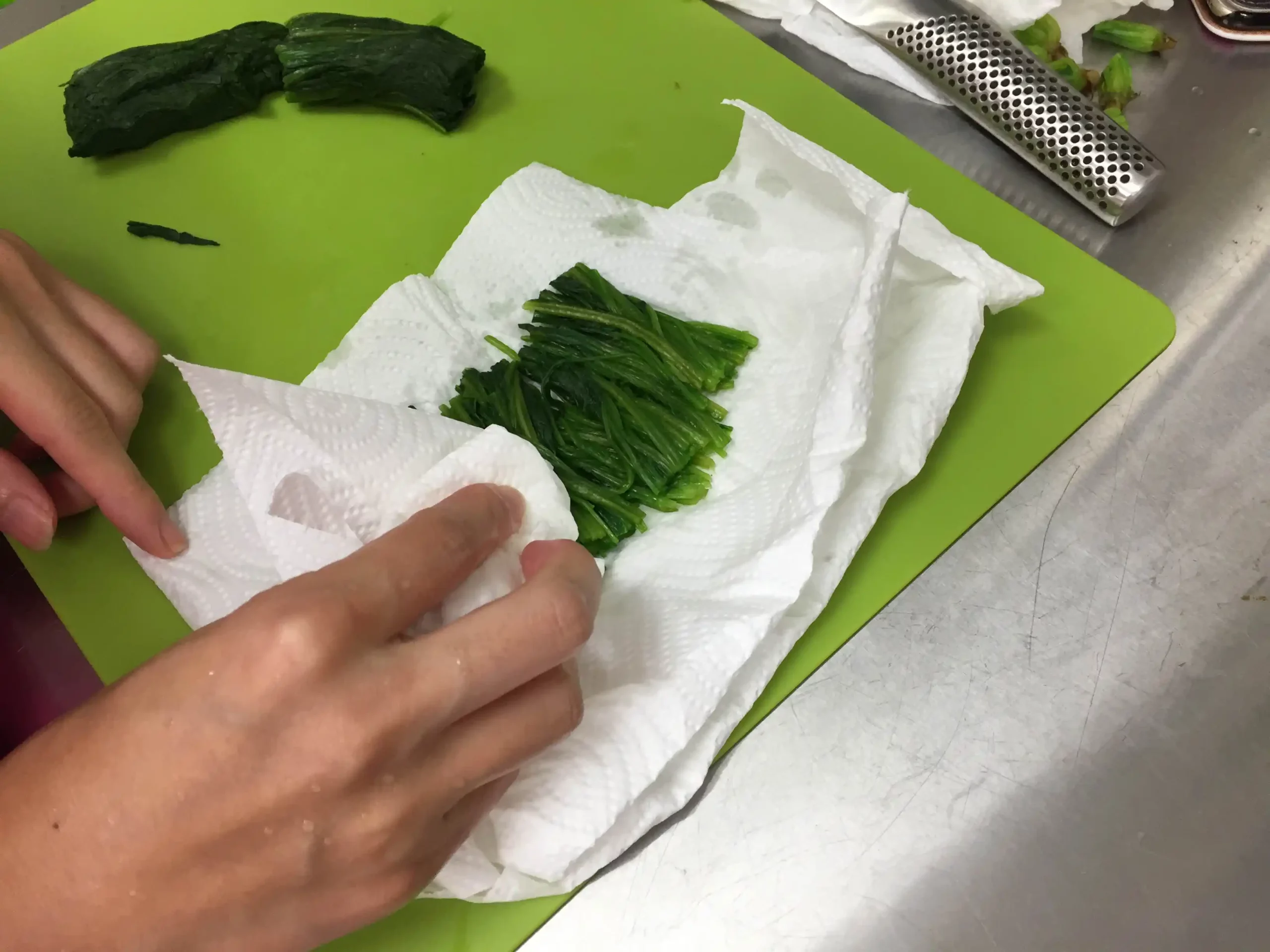
4.1 Place in a freezer pack and freeze. Let's remove as much air as possible when closing. Prevents oxidation and discoloration during storage.
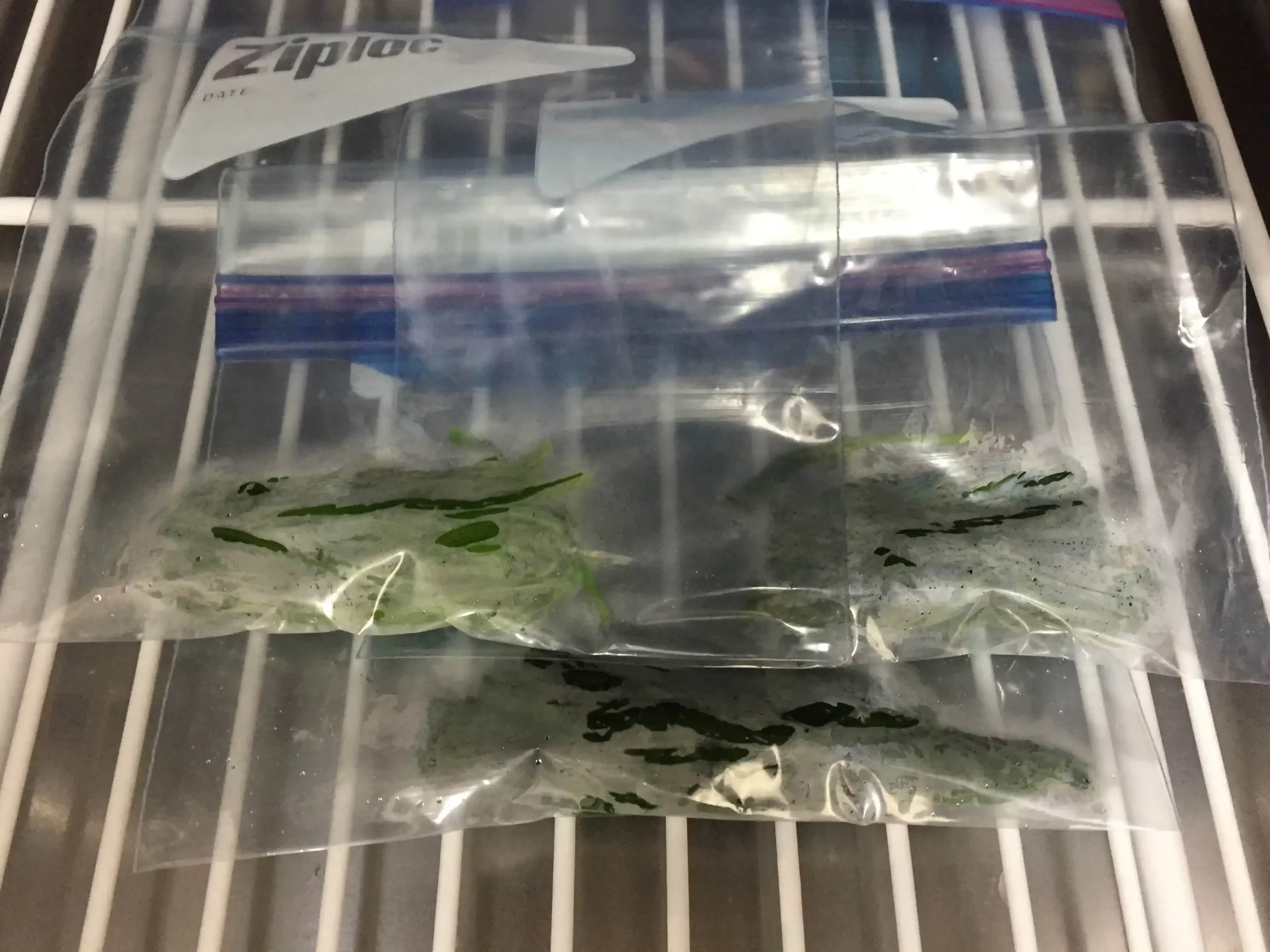
[When you want to freeze with higher quality]
4.2 If you have room in your freezer, freeze it on a metal tray. The thermal conductivity of metal is more than 30 times that of air, so it can be frozen faster and has better quality. Once the vegetables are completely frozen, store them in a freezer bag.
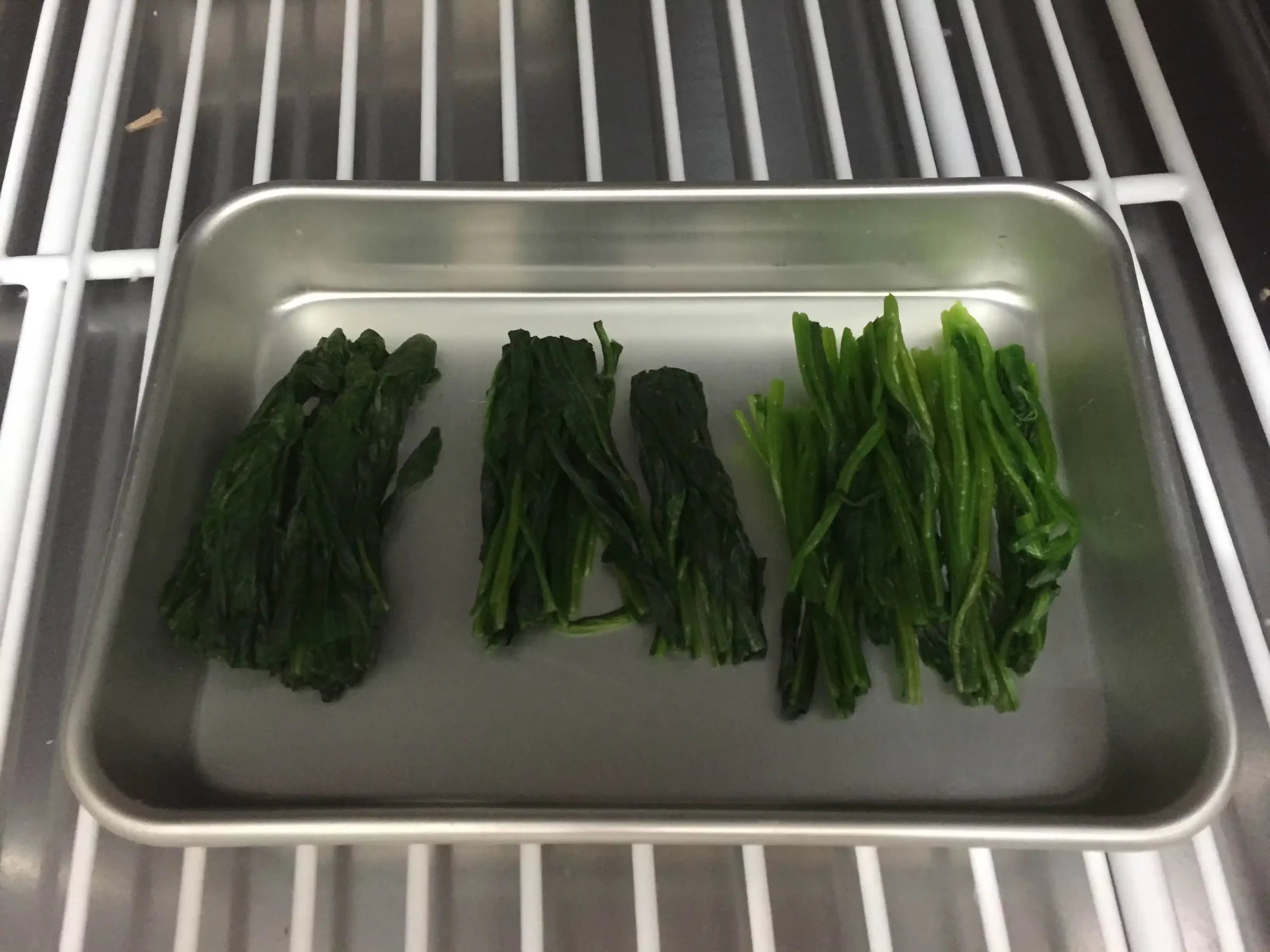
blanching carrots
1. Wash and peel the carrots. This time, I used the back of a knife to lightly scrape off the dirt.
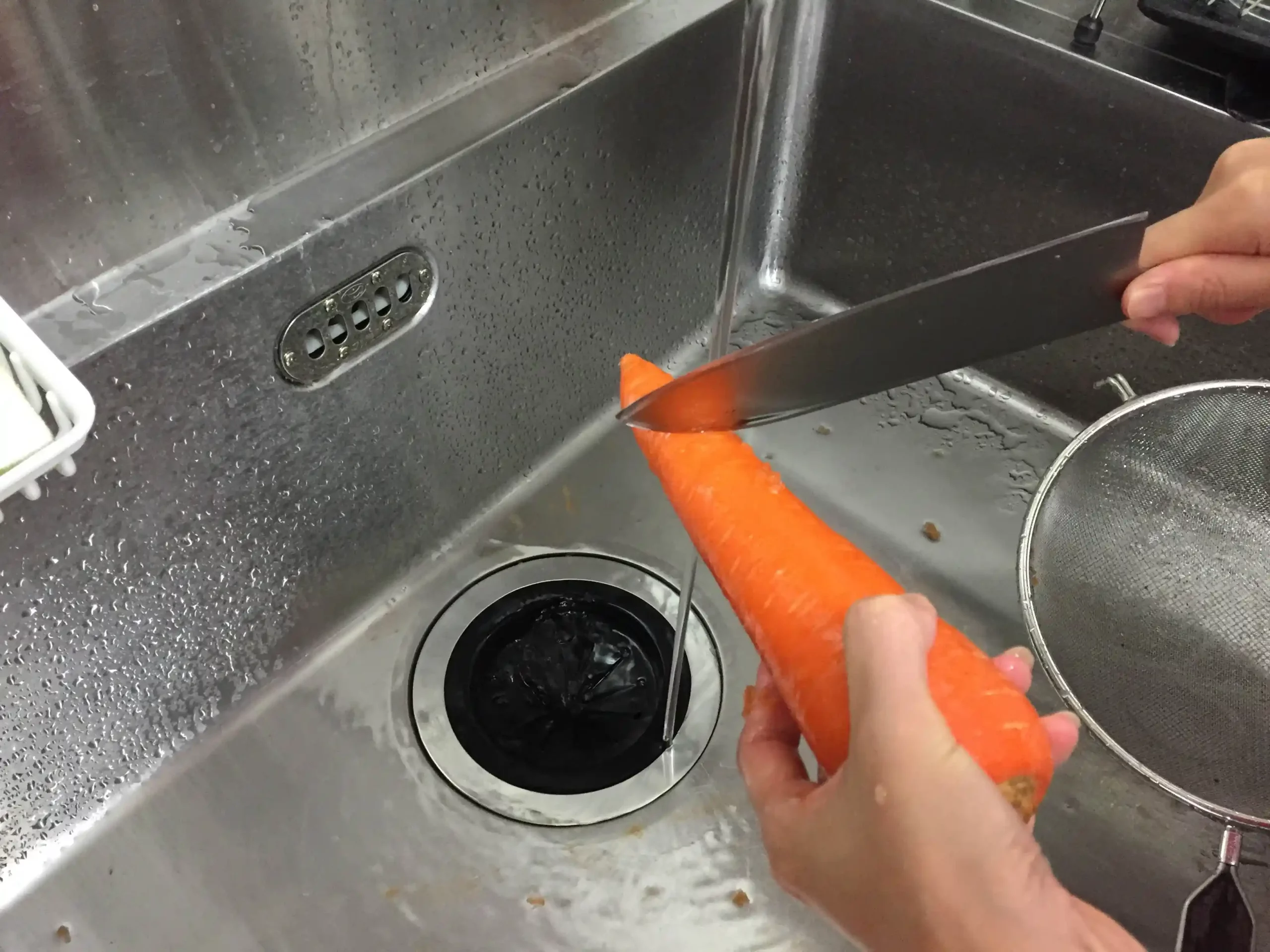
2. Cut the carrots into bite-sized pieces. I cut it into pieces that are easy to use for stir-frying vegetables.
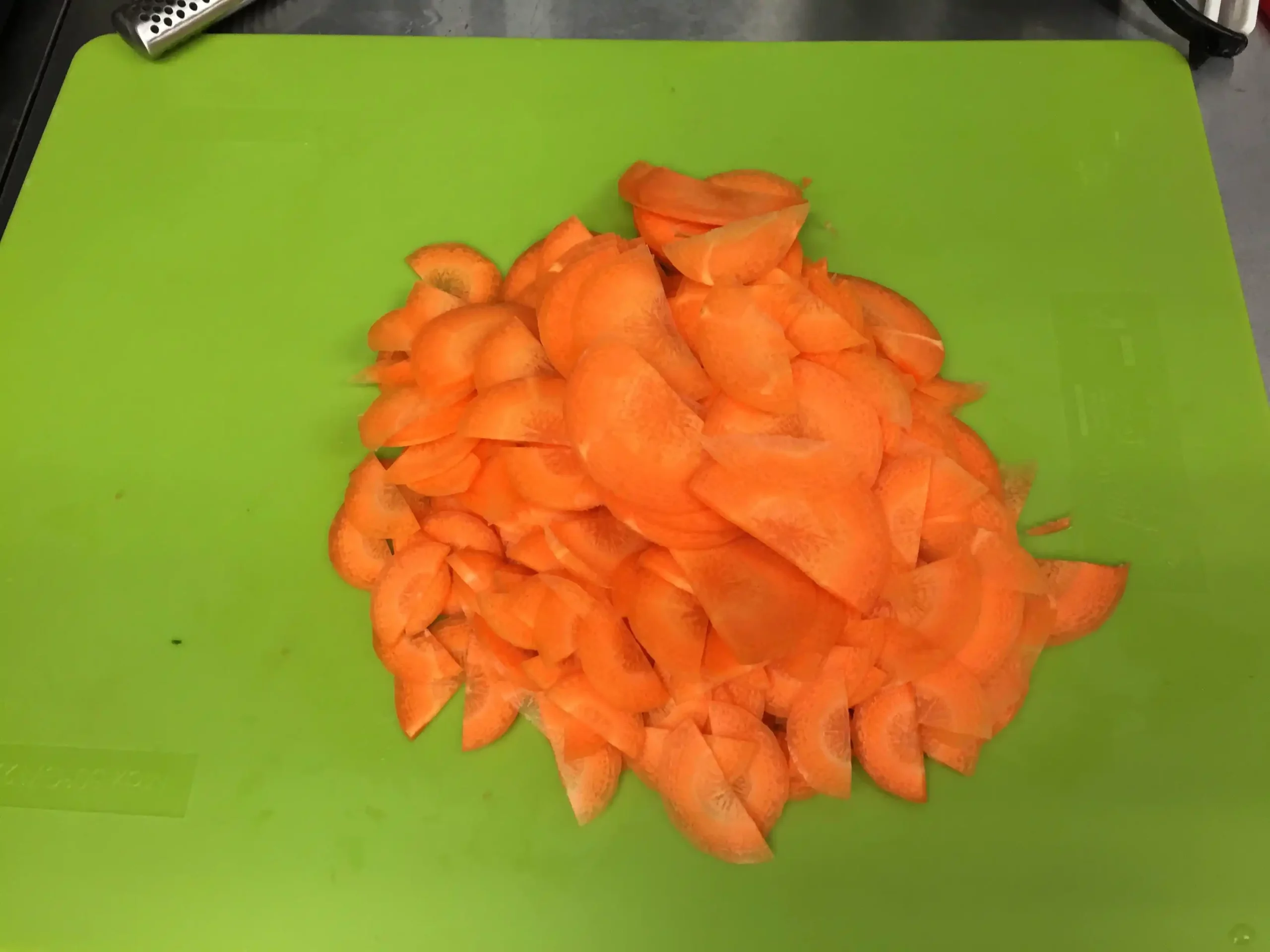
3. Add carrots to boiling water and blanch. The heating time depends on the size of the cut, but the approximate heating time is about 20 to 30 seconds.
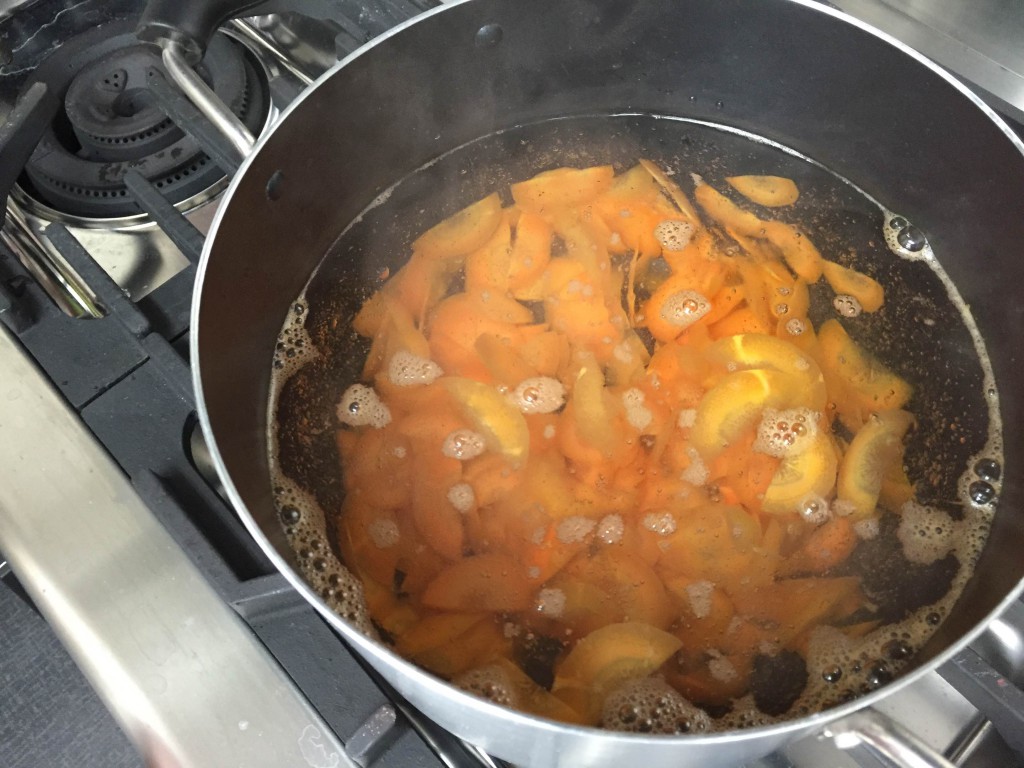
4. Fry in a colander and cool immediately with cold water.
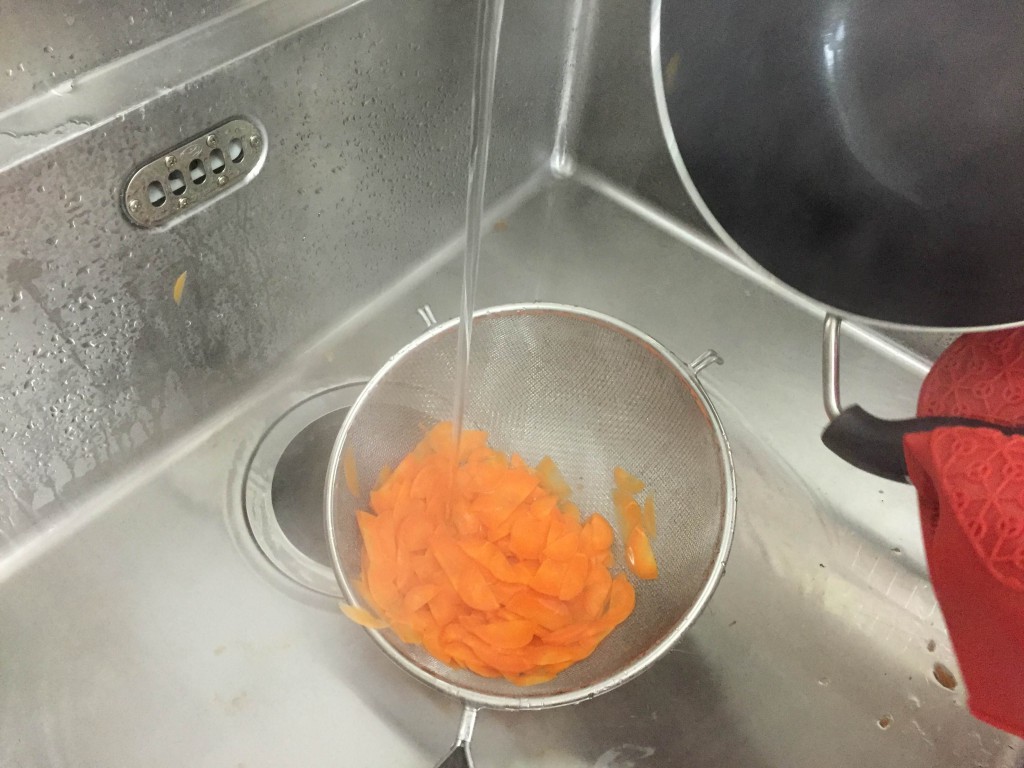
5. Wipe off the moisture thoroughly.
If you freeze the vegetables with water remaining, frost will form and damage the vegetables, so be sure to wipe them thoroughly with paper towels.
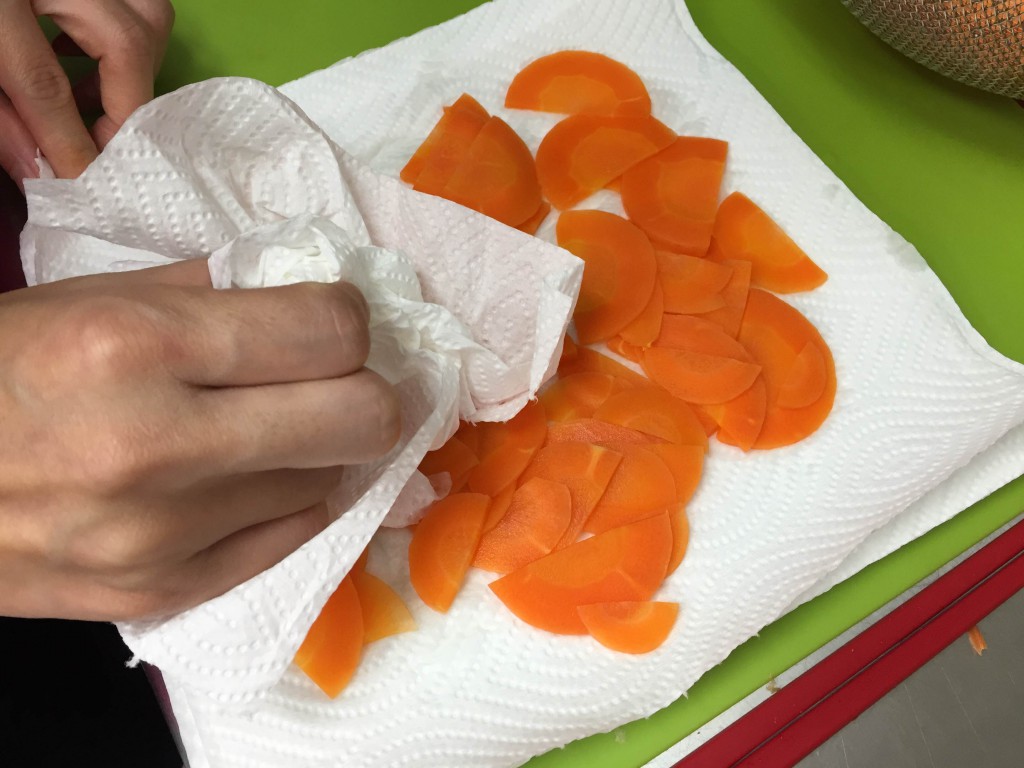
6.1 Place in a freezer pack and freeze. Let's remove as much air as possible. Prevents oxidation and discoloration during storage.
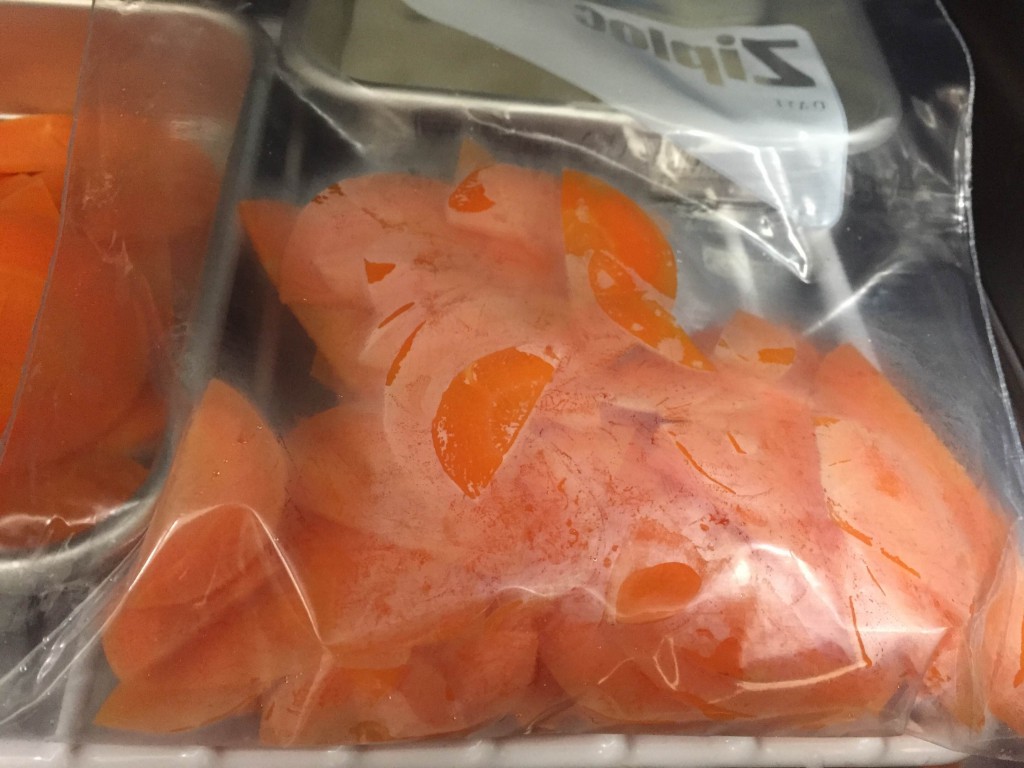
[When you want to freeze for higher quality]
6.2 If you have room in your freezer, freeze it on a metal tray. The thermal conductivity of metal is more than 30 times that of air, so it can be frozen faster and has better quality. Once the vegetables are completely frozen, store them in a freezer bag.
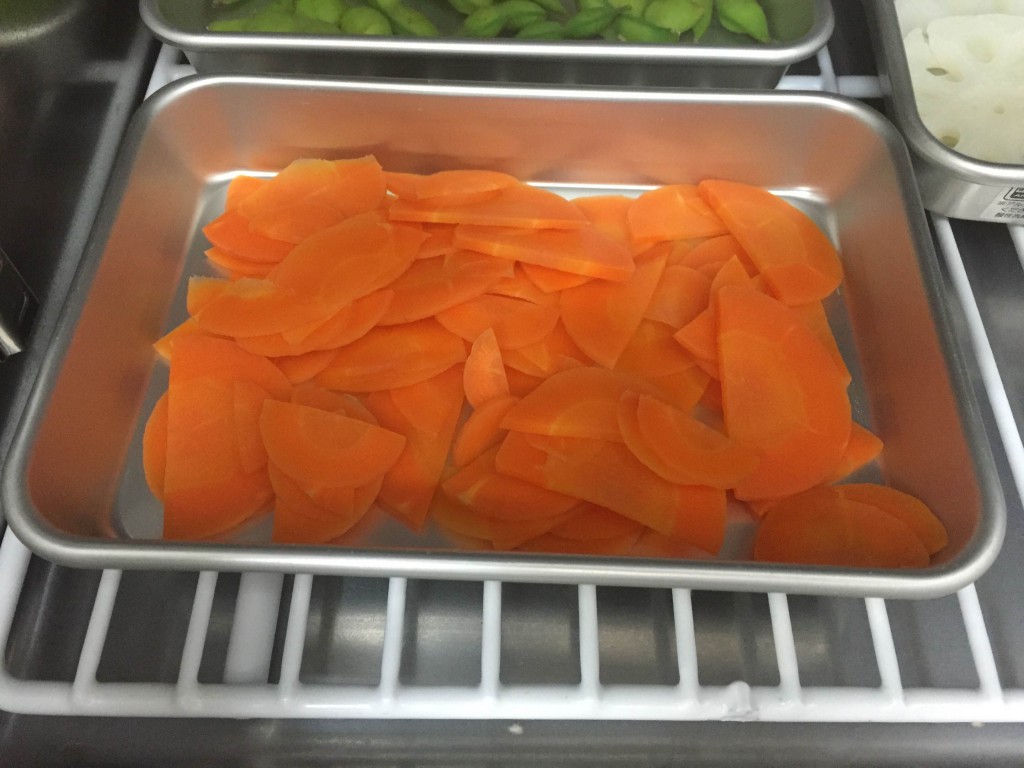
Freezing storage period of blanched vegetables
If you store it for about a month, it will be delicious.
It will oxidize little by little during storage, so to prevent this, if you vacuum pack it and store it in a -30° commercial freezer, it will last for about 3 months.
Also, if you use rapid freezer it will last for about 6 months.
Blanching of sea urchin
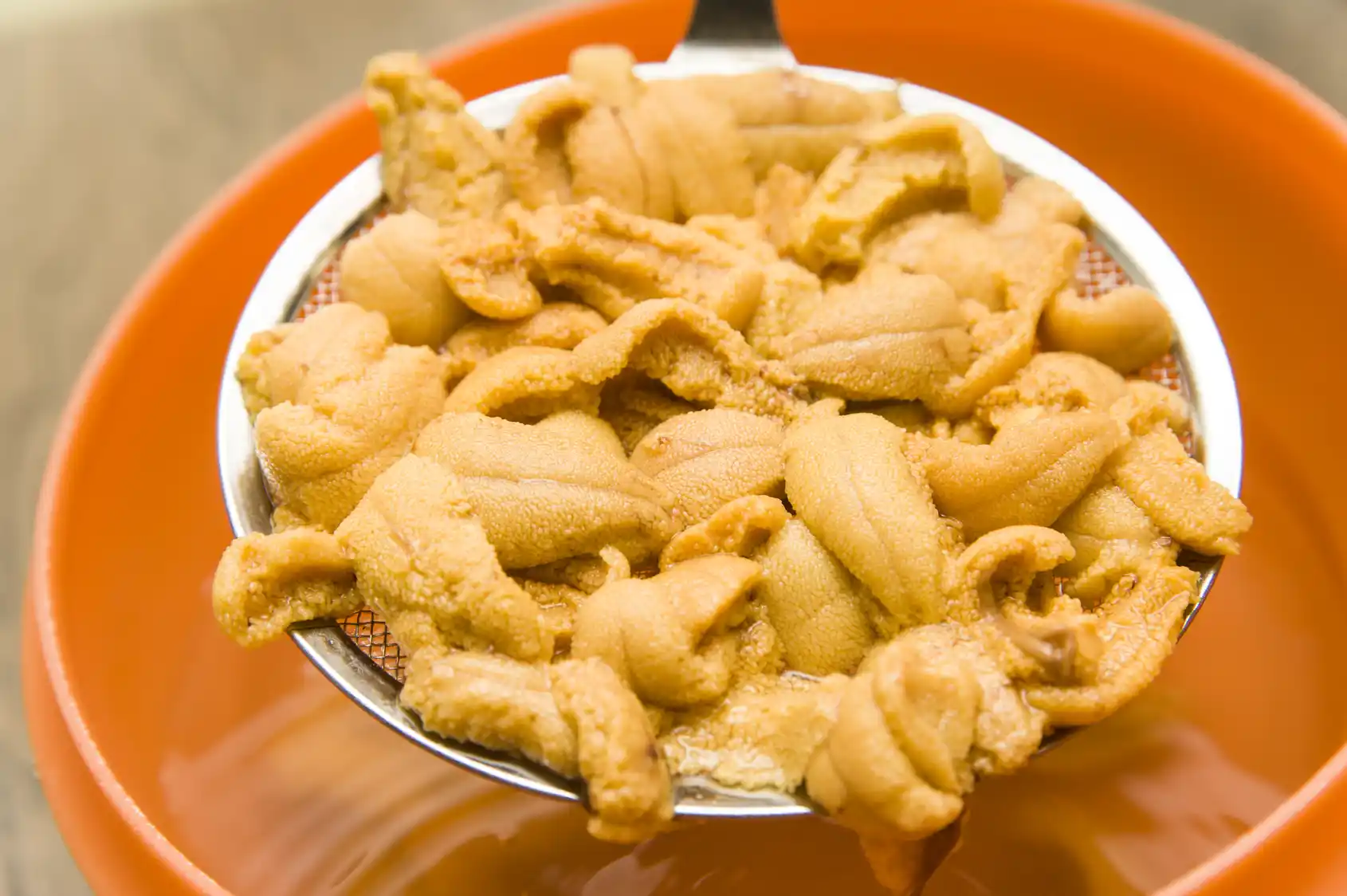
Blanching is also often used when freezing sea urchin. Sea urchin is said to be the most difficult food to freeze, as when frozen, the meat collapses and becomes liquid.
However, sea urchins can also be frozen by soaking them in boiling water or steaming them to harden the surface.
Although the original flavor of sea urchin will be slightly lost, raw sea urchin has a short shelf life, so blanched frozen sea urchin is often available.
Conclusion
What did you think. When vegetables are frozen, they often lose moisture and become limp, but blanching can significantly prevent moisture loss.
It is an essential technique when preserving vegetables for a long period of time, as it suppresses enzyme activity, prevents discoloration, and has a sterilizing effect.
If you want to keep it in better condition for a longer period of time, you can try it at home.








![[Storage period increased by 30 times! ] Achieving a stable supply of raw whitebait!](https://shunkashutou.com/wp-content/uploads/2016/11/579c55e6d32e1385c250e8e7c3ed59a71.jpg)
![[Sales increased 100 times! ] rapid freezing the signature menu “Ni-katsu sandwich”!](https://shunkashutou.com/wp-content/uploads/2016/11/IMG_02391.jpg)
![[Horse sashimi] We have significantly reduced waste loss with rapid freezer!](https://shunkashutou.com/wp-content/uploads/2016/11/5fda59d0cbcdabde18e58c3c58c09ed0.jpg)




![[Storage period increased from 3 days to half a year! ] Restaurants are expanding their business using wholesale and mail order!](https://shunkashutou.com/wp-content/uploads/2018/04/66c19942ab4ba346fdb64ccc04cde373.png)
![[Reduce loss from 200 kg of oysters to zero] Improve loss and expand business with rapid freezer](https://shunkashutou.com/wp-content/uploads/2018/06/19785ca583a8d3c4041c7c192d041b0d.jpg)














![[Can it be frozen? ] How to freeze milk, storage period, and 5 recipes!](https://shunkashutou.com/wp-content/uploads/2023/09/d0390cbc7a5e9a76c11d5b9eff3b4a5b.jpg)
![[Which products are popular? ! ] Recommended frozen food ranking](https://shunkashutou.com/wp-content/uploads/2023/08/frozen-food-ranking-1024x682-1.jpg)
![[Explanation with photos! ] How to freeze and fry croquettes, 5 carefully selected recipes](https://shunkashutou.com/wp-content/uploads/2023/09/b364ee97a71777f9dd2e35fddbbdda72.jpg)
![[Delicious, Convenient, Cheap] Recommended commercial frozen foods for restaurants to purchase](https://shunkashutou.com/wp-content/uploads/2023/07/business-frozen-food-1024x682-1.jpg)
![[Explanation with photos! ] How to freeze green beans, storage period, and 5 recipes](https://shunkashutou.com/wp-content/uploads/2023/09/f3dbbe5b1d05a50f514a833efdceced9.jpg)
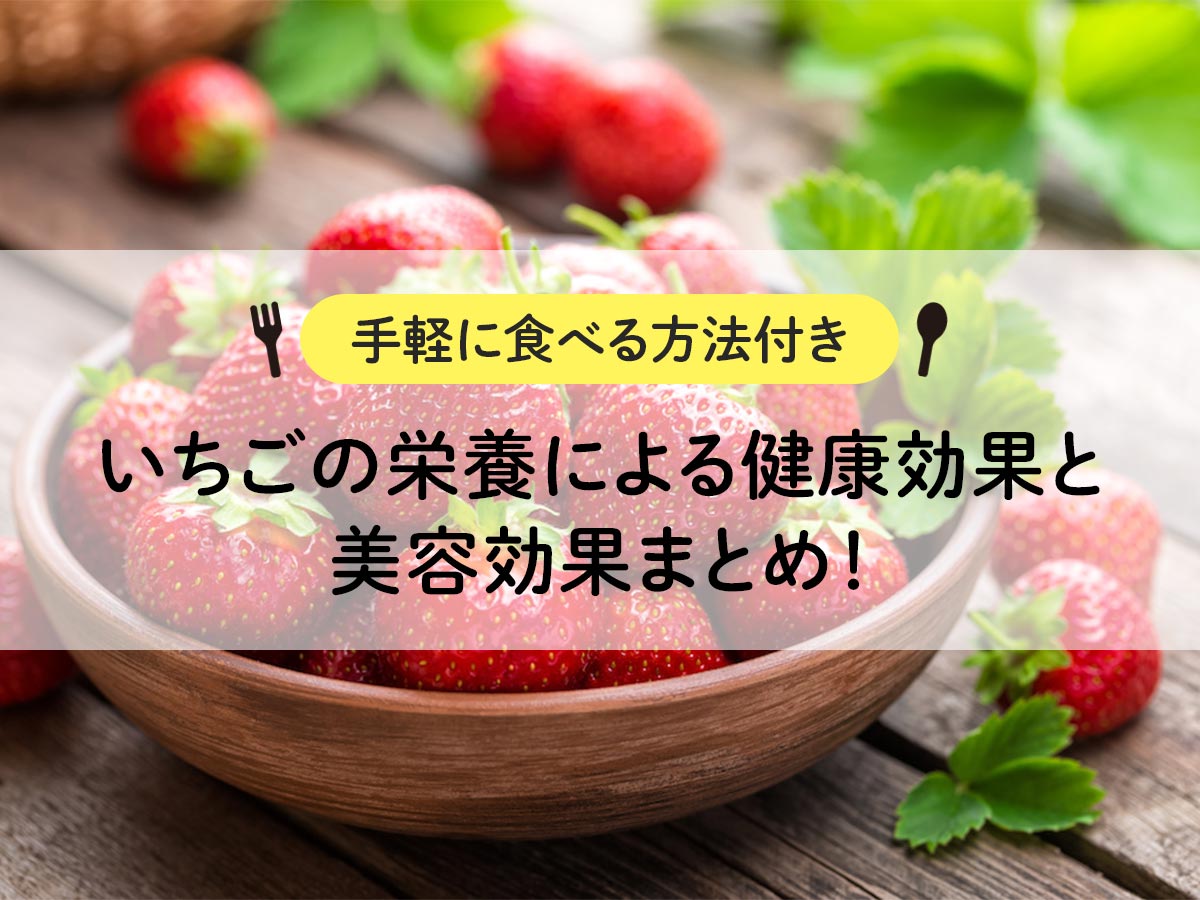
![How to freeze parsley, nutrition, and 5 easy recipes! [Solved with photos! ]](https://shunkashutou.com/wp-content/uploads/2023/09/paseri-768x513-1.jpg)
![[Explanation with photos! ] Shiitake mushroom freezing method and storage period, 5 recipes](https://shunkashutou.com/wp-content/uploads/2023/09/shiitake-768x512-1.jpg)
![[Can it be frozen? ] Introducing the recipe and how to freeze potato salad!](https://shunkashutou.com/wp-content/uploads/2023/10/3c640cd23d65764c14f701d25970ed59.jpg)
![[Explanation with photos] How to freeze winter melon, storage period, and 5 recipes!](https://shunkashutou.com/wp-content/uploads/2023/10/8c301e3fcfbb9c7f457d8b05dfea902d.jpg)
![[Can it be frozen? ] Introducing how to freeze ham and delicious recipes!](https://shunkashutou.com/wp-content/uploads/2023/09/867d7b924bf17d95bedba60a6503e00e.jpg)
![Introducing recipes and methods for freezing and thawing bananas [Explanation with photos! ]](https://shunkashutou.com/wp-content/uploads/2023/07/494e7567627fb35e47ee5cb0e06e142c.jpg)
![[Fruit becomes dessert! ] How to freeze kiwi and sweets recipes](https://shunkashutou.com/wp-content/uploads/2023/09/ecc0fc2bc14391ea13ce2e7a43d1416e.jpg)
![[Should be frozen! ? ] How to freeze and thaw bread, 5 carefully selected recipes!](https://shunkashutou.com/wp-content/uploads/2023/10/4691acc32cab80284fa0cddf72d58e95.jpg)
![[Make frozen oysters even more delicious! ] Correct thawing method and usage recipes](https://shunkashutou.com/wp-content/uploads/2023/10/5855c6e6d6dbdb298f86405b4b522329.jpg)
![[Can it be frozen? ] How to freeze mashed potatoes, how long they can be stored, and how to use them](https://shunkashutou.com/wp-content/uploads/2023/09/b7f3f25102051473b7c2f9452840a6f4.jpg)
![[Can it be frozen? ] Introducing a good way to freeze green peppers and side dish recipes](https://shunkashutou.com/wp-content/uploads/2023/09/30407f106c5c082468c66af0d40c5858.jpg)
![[Explanation with photos! ] How to freeze hijiki and its storage period, 5 recipes!](https://shunkashutou.com/wp-content/uploads/2023/09/ff6bdc527dd066b7d725a48161d7925d.jpg)
![Introducing how to freeze lettuce and recipes [Explanation with photos! ]](https://shunkashutou.com/wp-content/uploads/2023/09/e550b4a0d886ba3aa277d5d8fc87ba73.jpg)
![[Explaining how to freeze fish! ] Introducing storage period and thawing method!](https://shunkashutou.com/wp-content/uploads/2023/08/a794d4ac4e5f56cd881ba06a0edf9449.jpg)
![Introducing the method and recipe for freezing green onions [Explanation with photos]](https://shunkashutou.com/wp-content/uploads/2023/09/negi5-768x512-1.jpg)
![[How long does it last? ] How to freeze cooked rice and how long it can be stored](https://shunkashutou.com/wp-content/uploads/2023/10/7e31499b015d58f220536e3274a41bf2.jpg)
![[Osechi remake dishes too! ] Introducing the method and recipe for freezing black beans](https://shunkashutou.com/wp-content/uploads/2023/09/9bcd5b0667eef32b7c7daf786e01172f.jpg)
![How to freeze/thaw turnips, storage period, and 5 recipes [Explanation with photos]](https://shunkashutou.com/wp-content/uploads/2023/09/eae0789d04cc4971cf4232963b4d2231-1.jpg)
![Explaining how to freeze Maitake mushrooms, their nutritional value, and recipes! [Explanation with photos! ]](https://shunkashutou.com/wp-content/uploads/2023/09/9face03809f7fcaf2e3599773b2e8c80.jpg)
![How to freeze apples and what is their nutritional value? Perfect for baby food! [Explanation with photos! ]](https://shunkashutou.com/wp-content/uploads/2023/10/cf0380a4b371d2f43e0f0ed99c7344a2.jpg)
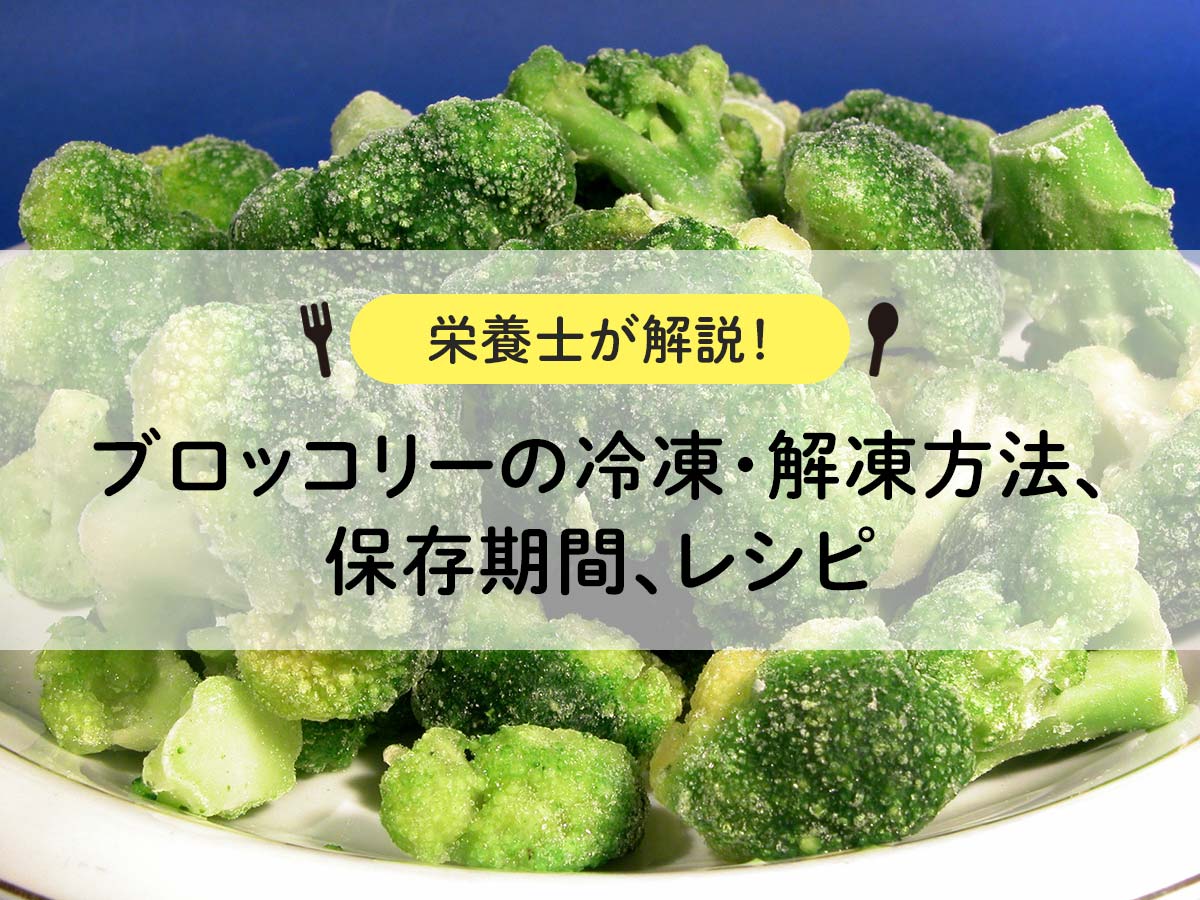
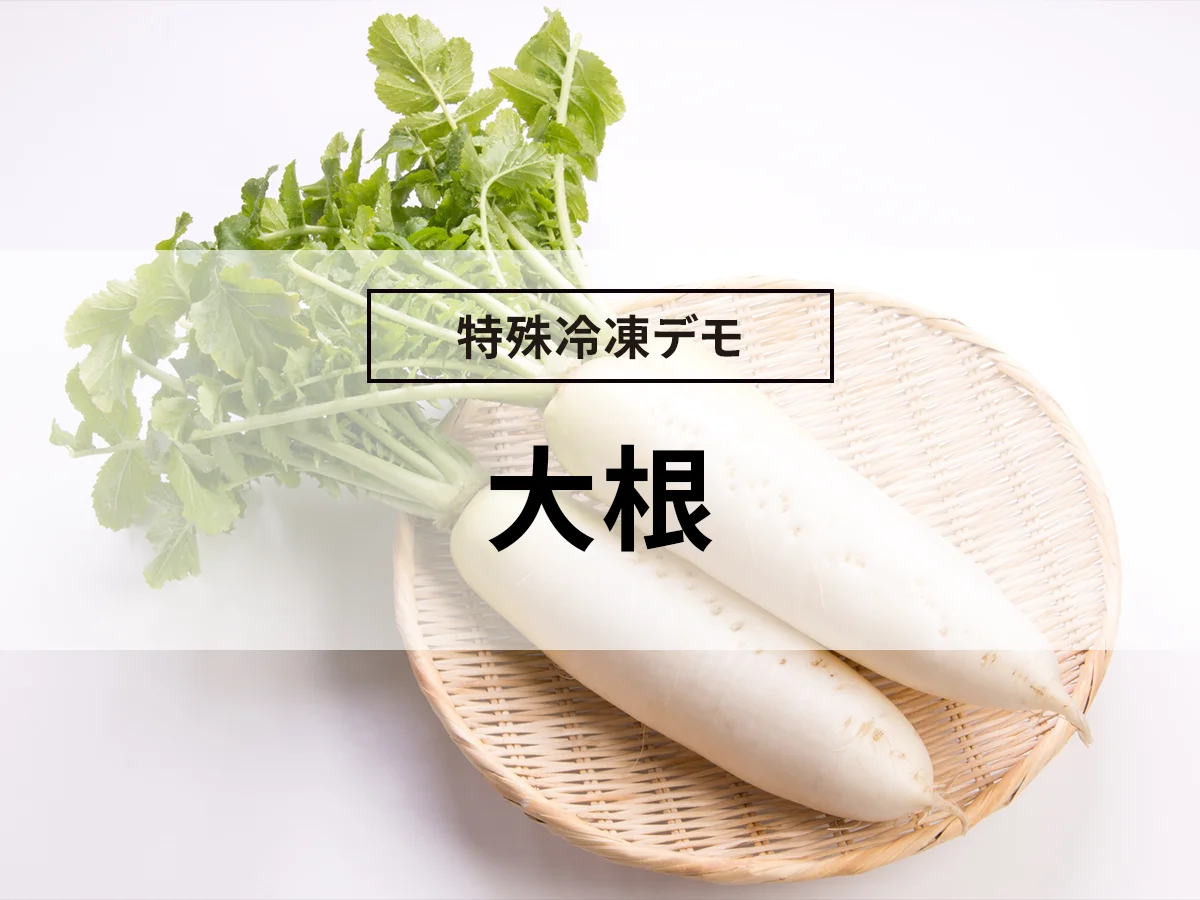
![Explaining how to freeze garland chrysanthemums with photos! [Defrosting and storage period, 5 recipes]](https://shunkashutou.com/wp-content/uploads/2023/10/syungiku-catch-768x512-1.jpg)
![Introducing how to freeze carrots and recipes [Explanation with photos! ]](https://shunkashutou.com/wp-content/uploads/2023/08/837a12b0247130309b466717f2b8c53c.jpg)
![Introducing how to freeze corn and recipes [Explanation with photos! ]](https://shunkashutou.com/wp-content/uploads/2023/08/195a6cd4120bbae043606a677c71a7dc.jpg)
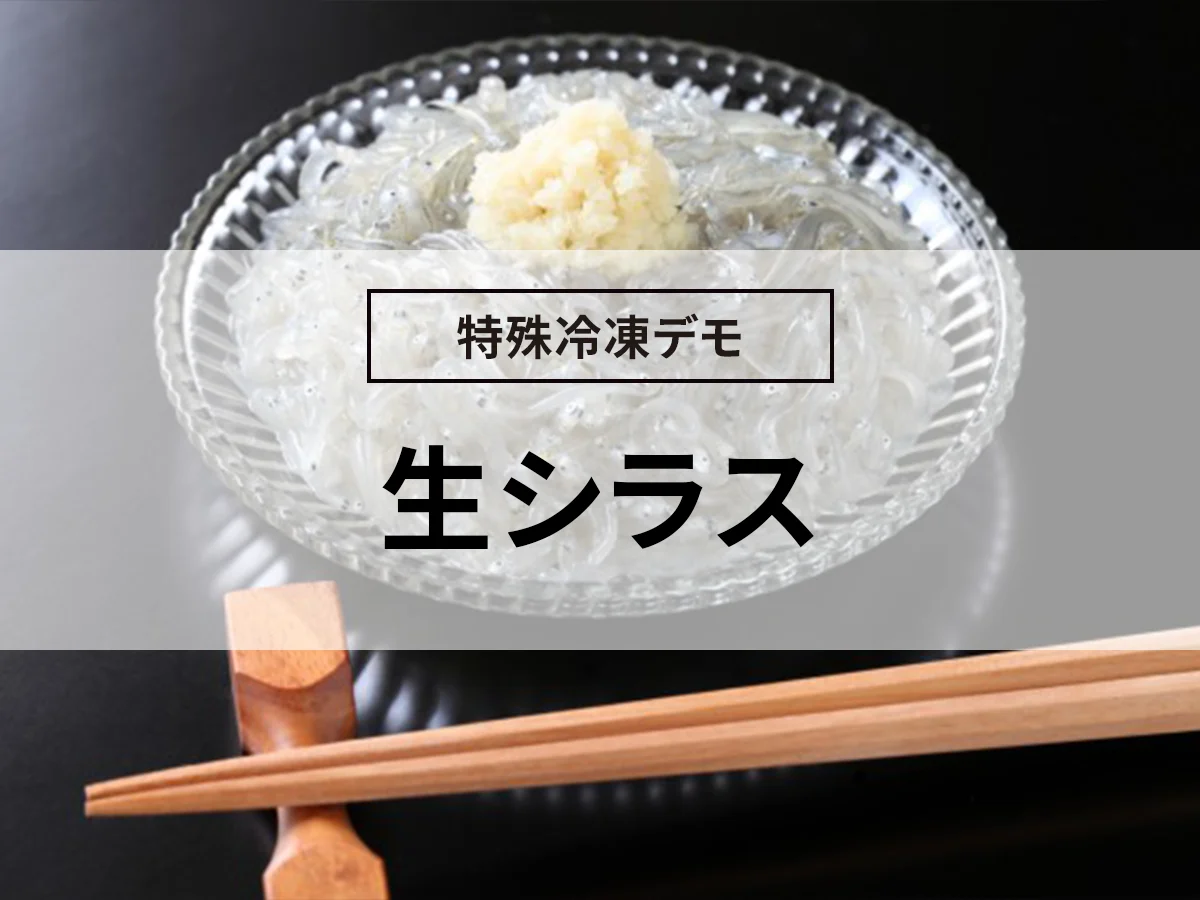
![[Supervised by a nutritionist! ] How to freeze bean sprouts, storage period, and 5 recipes!](https://shunkashutou.com/wp-content/uploads/2023/09/34f4d39c30e79629a89bf54221841964.jpg)

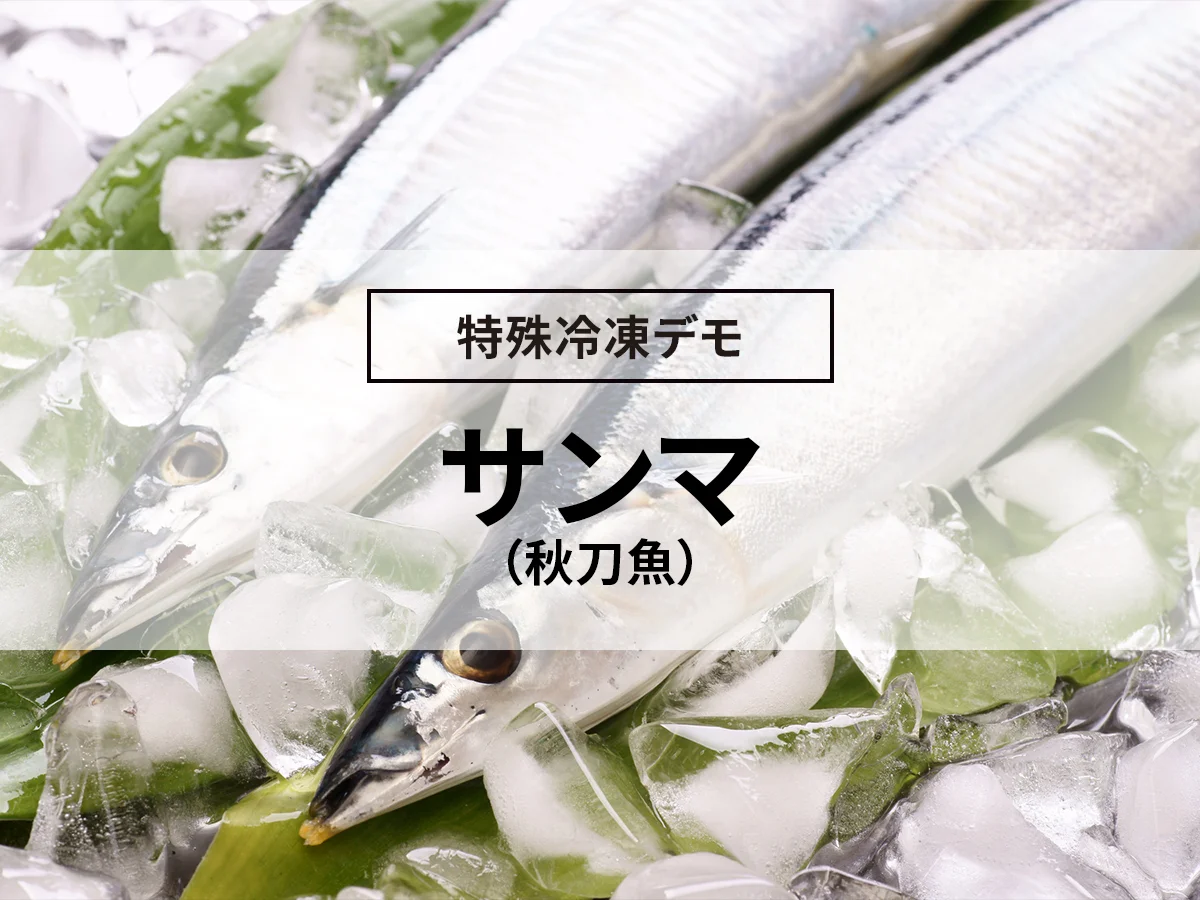
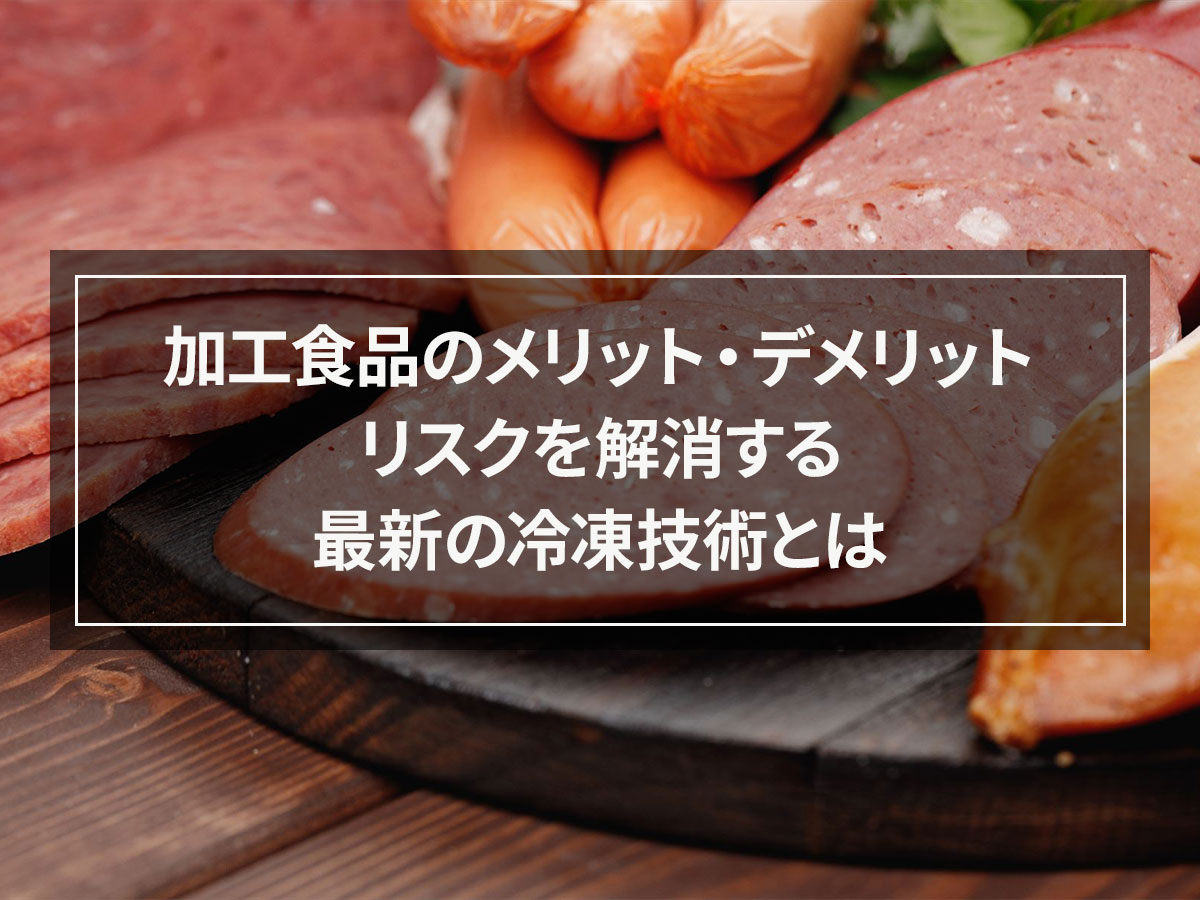
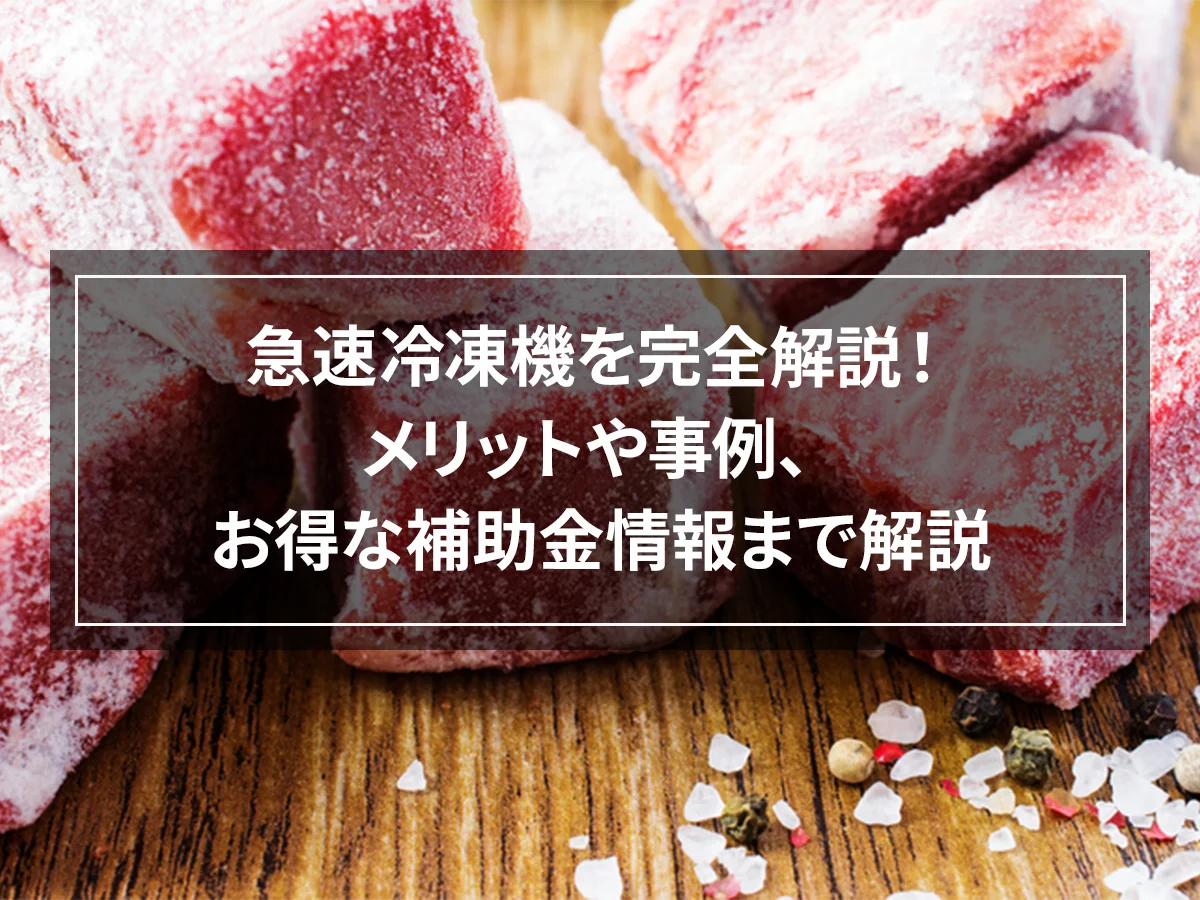
![[Explanation with photos! ] How to freeze beef, storage period, and 5 recipes!](https://shunkashutou.com/wp-content/uploads/2023/07/8717f2a867f52157bab47841b0f29019.jpg)
![[Explanation of how to fry! ] How to freeze and thaw pork cutlet, remake recipe!](https://shunkashutou.com/wp-content/uploads/2023/10/0a4143ad8ea0cc6bb6fdab8c74fab407.jpg)
![[Save onions in the freezer! ] Introducing storage methods and recipes with photos](https://shunkashutou.com/wp-content/uploads/2023/10/9d2c1259f1c42d7a0e3b61af361e5da8.jpg)
![[Recommended for making lunch boxes! ] Delicious ways to use frozen foods](https://shunkashutou.com/wp-content/uploads/2023/09/m-frozen-food-bento_eyecatch.jpg)
![[Explanation with photos! ] A good way to freeze lotus roots and recipes to use them!](https://shunkashutou.com/wp-content/uploads/2023/10/adac4ea3f269121c4cb5e74b323508f5.jpg)
![How to freeze tomatoes, storage period, and 5 recipes! [Explanation with photos! ]](https://shunkashutou.com/wp-content/uploads/2023/10/tomato-768x513-1.jpg)
![[Delicious frozen foods] How to use them in lunch boxes, dinners, and snacks](https://shunkashutou.com/wp-content/uploads/2023/08/frozen-food-1024x683-1.jpg)
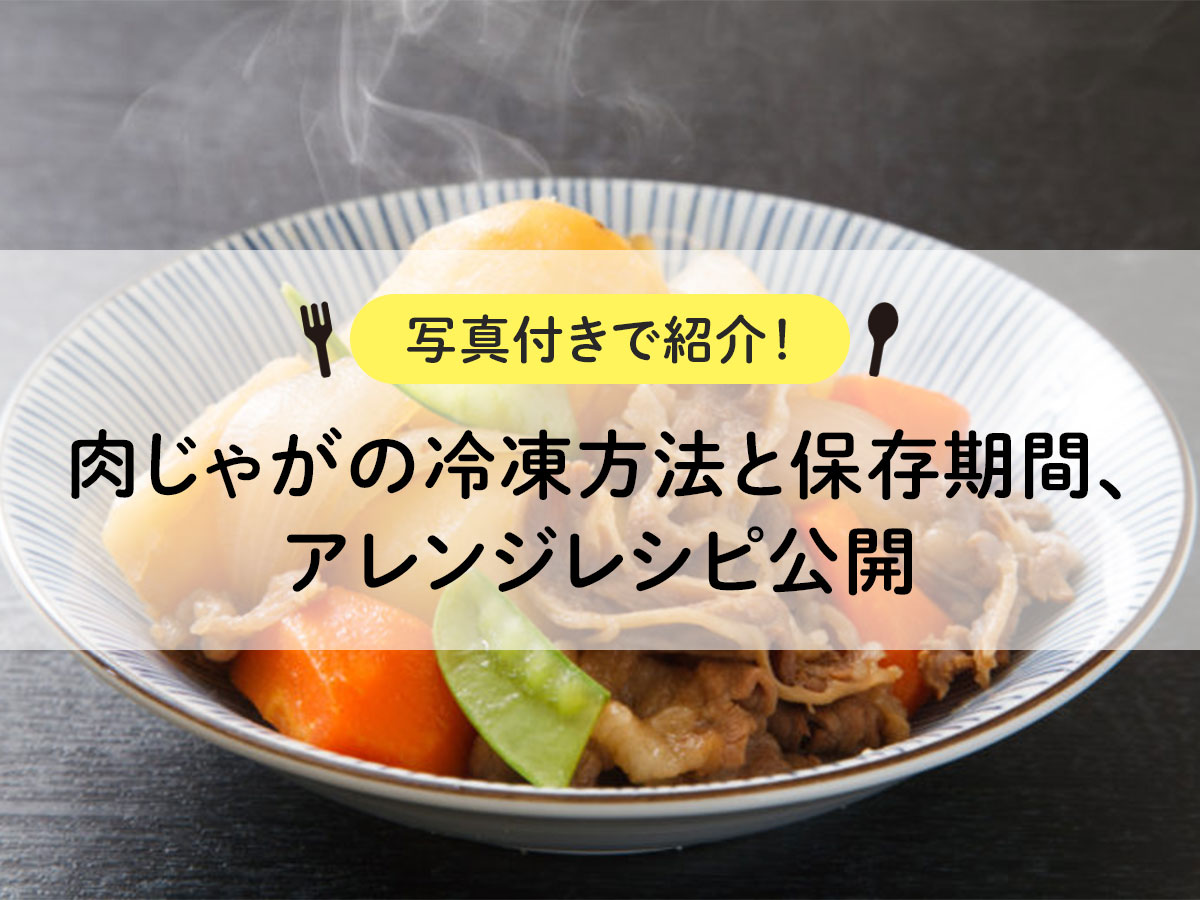
![[Delicious frozen squid recipe! ] Tips on how to eat squid deliciously and without waste](https://shunkashutou.com/wp-content/uploads/2023/10/f3bc339b6bcaff01bd8e2aaa4257acfe.jpg)
![[Can it be frozen? ] How to freeze fresh cream, storage period, thawing method and 5 recipes!](https://shunkashutou.com/wp-content/uploads/2023/09/1887f5bd8f2d7f9ef1d88754f2c5bcc4.jpg)
![[Be good at saving money! ] Introducing the method and recipe for freezing fried rice](https://shunkashutou.com/wp-content/uploads/2023/10/mayo-tyahan-1024x768-1.jpg)
![[What is the expiry date of frozen foods? ] Points to consider for eating deliciously](https://shunkashutou.com/wp-content/uploads/2023/08/0943c9901a0624d3b4b327a3461a7c01.jpg)
![[Explanation with photos] Freezing and storage period of yellowtail fillets, carefully selected recipes!](https://shunkashutou.com/wp-content/uploads/2023/08/2613b1c938d382e3afc17125432167f0-1.jpg)
![[Explanation with photos! ] How to freeze butter, storage period, and 5 recipes](https://shunkashutou.com/wp-content/uploads/2023/08/4e4d4fde2efeae3d997d4356f1cc75c1.jpg)
![How to freeze potatoes and a great time-saving recipe! [Moms must see! ]](https://shunkashutou.com/wp-content/uploads/2023/10/potato1-768x512-1.jpg)
![[Explanation with photos! ] How to freeze taro, storage period, and 5 recipes!](https://shunkashutou.com/wp-content/uploads/2023/10/116858380_-768x512-1.jpg)
![[Freezing Preservation Tips Series] How to freeze radish deliciously and reference recipes!](https://shunkashutou.com/wp-content/uploads/2023/08/0248ce56316e8dc86c8a3ea85ff1a479.jpg)
![[Explanation with photos! ] How to freeze pumpkin, storage period, and 5 recipes](https://shunkashutou.com/wp-content/uploads/2023/10/36d3edf3acec7cf27351bd1211e770ac.jpg)
![[Explanation with photos! ] Introducing the method and recipe for freezing komatsuna](https://shunkashutou.com/wp-content/uploads/2023/09/5d2a19a6e6cfb5ad0329d8fce162f292.jpg)
![How to freeze mushroom mushrooms, storage period, and 5 recipes! [Explanation with photos! ]](https://shunkashutou.com/wp-content/uploads/2023/09/4b6ffe2ef040e90085b4ee4f0c3e72a9.jpg)
![Introducing recipes and methods for freezing spinach [Explanation with photos! ]](https://shunkashutou.com/wp-content/uploads/2023/10/spinachh-768x512-1.jpg)
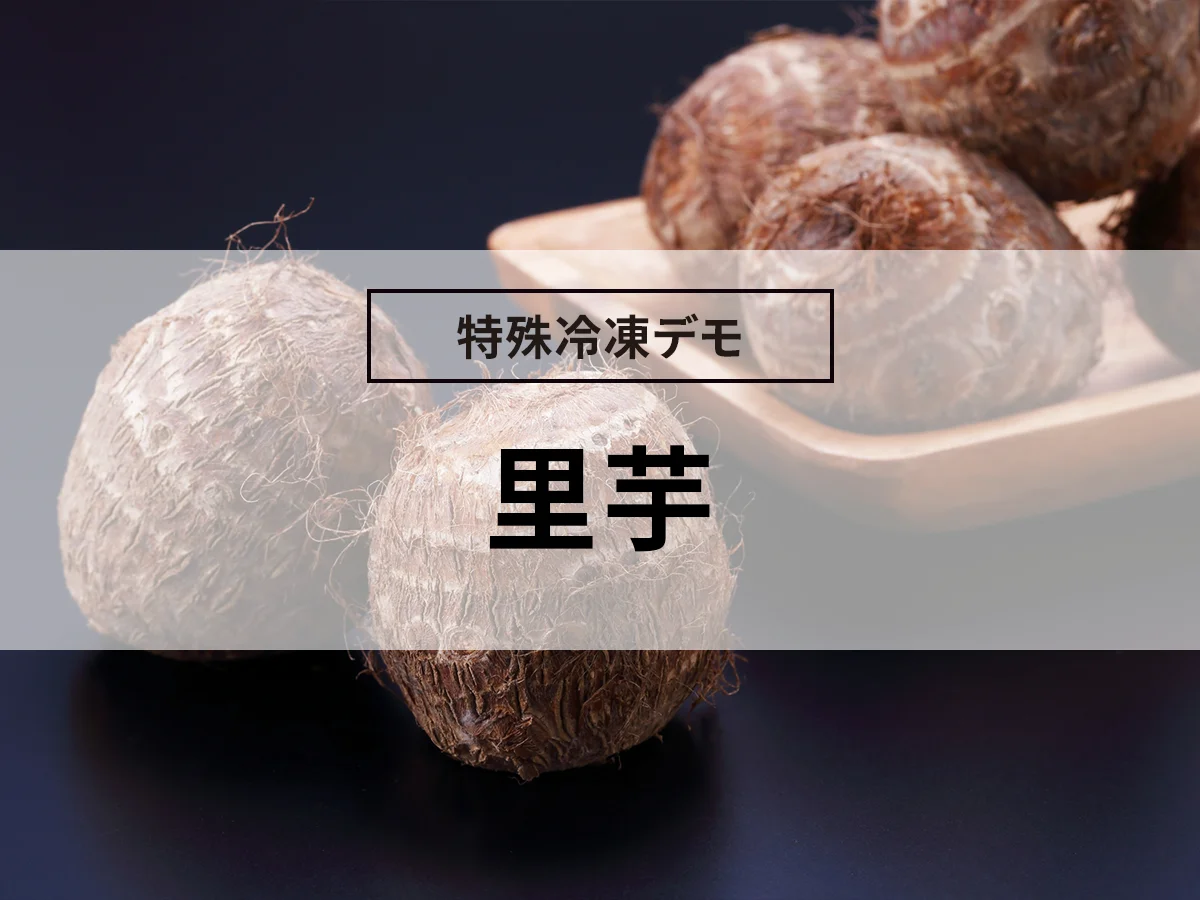
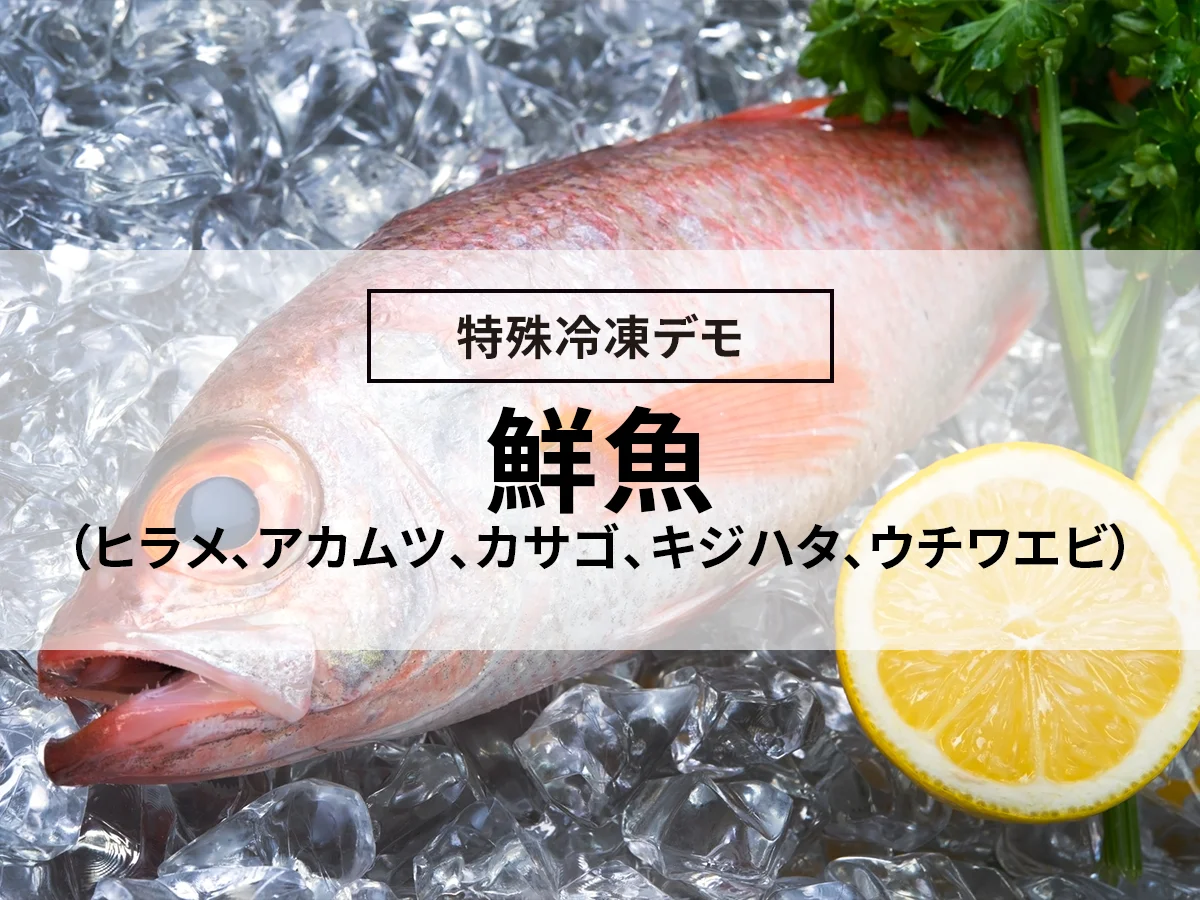
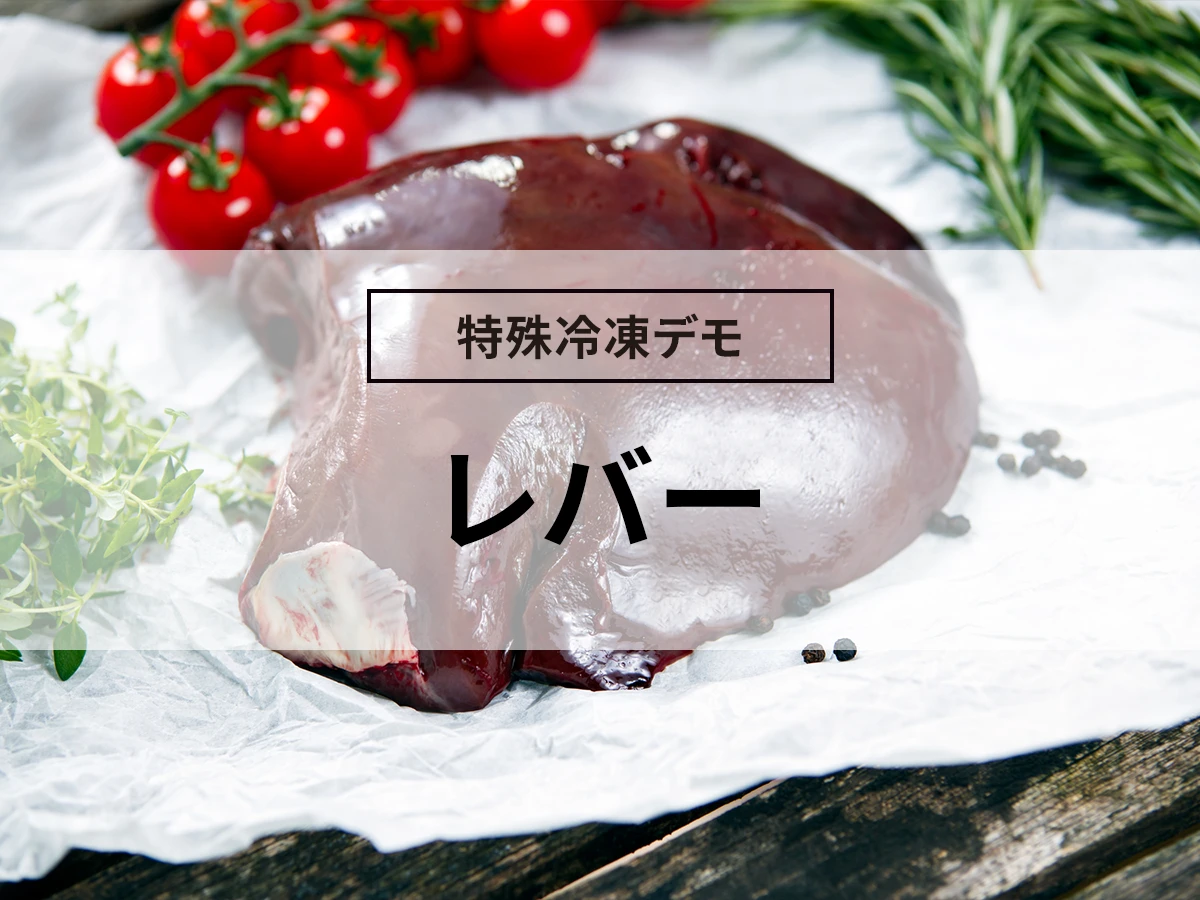
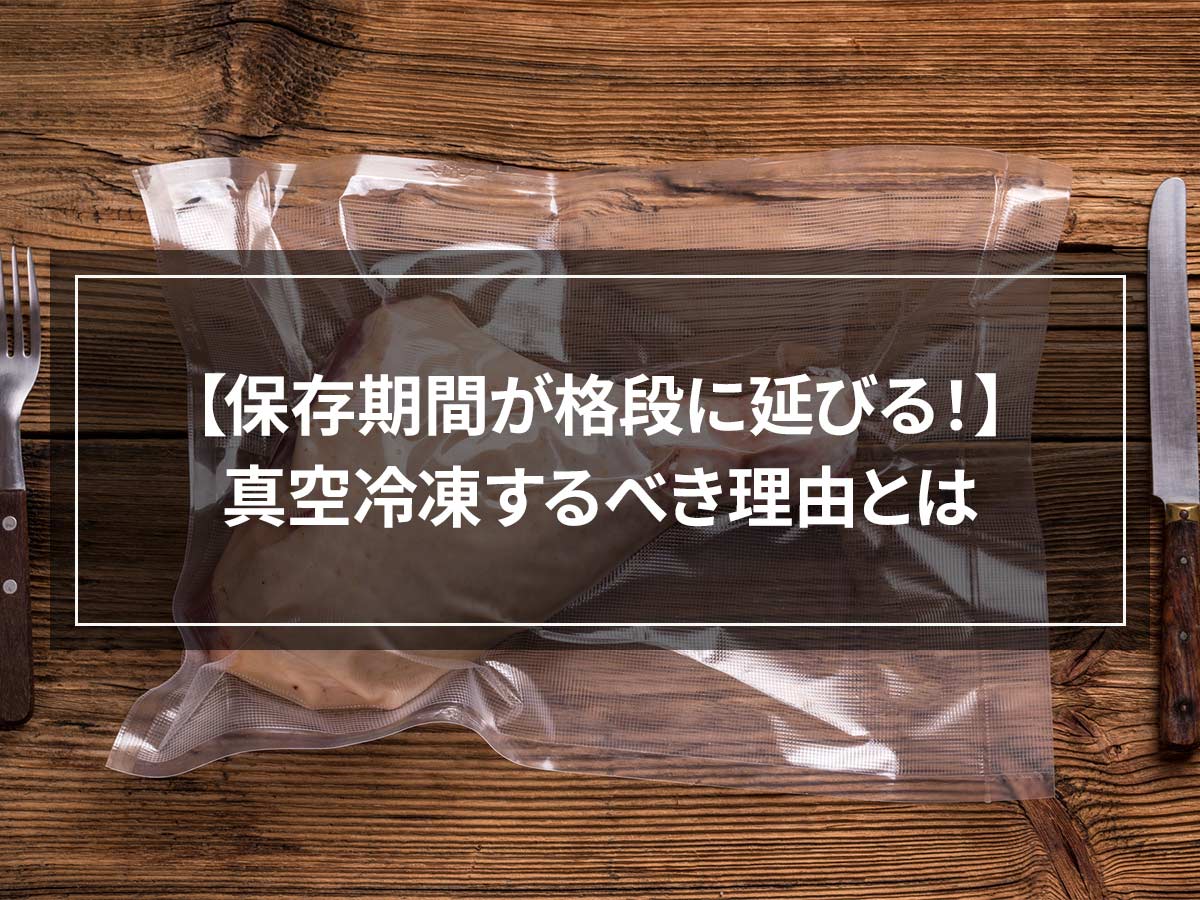
![Introducing the frozen preservation method and recipe for bamboo shoots [Explanation with photos! ]](https://shunkashutou.com/wp-content/uploads/2023/07/4c47b443710cb5788386ab6fd1fa0a07.jpg)




